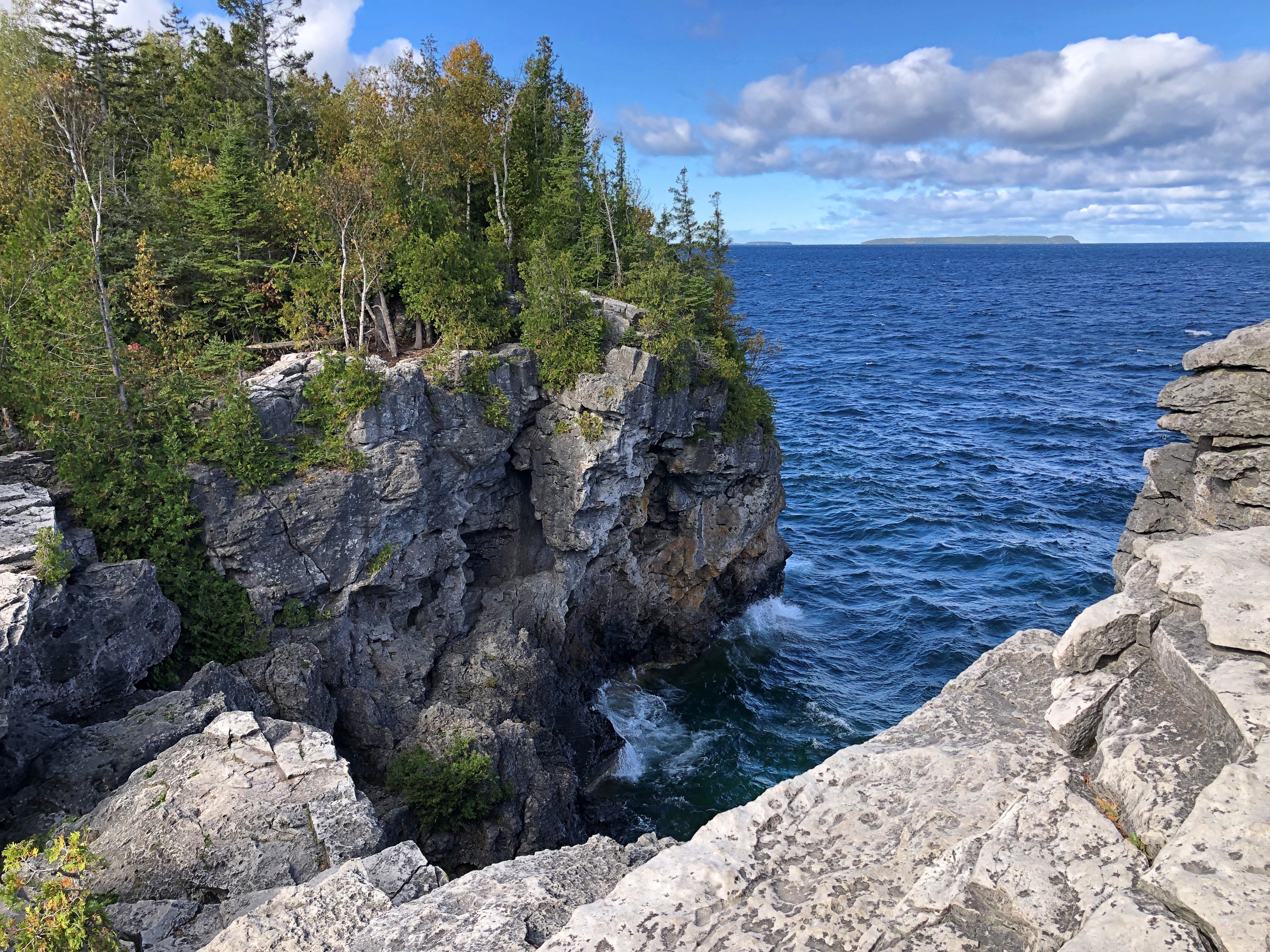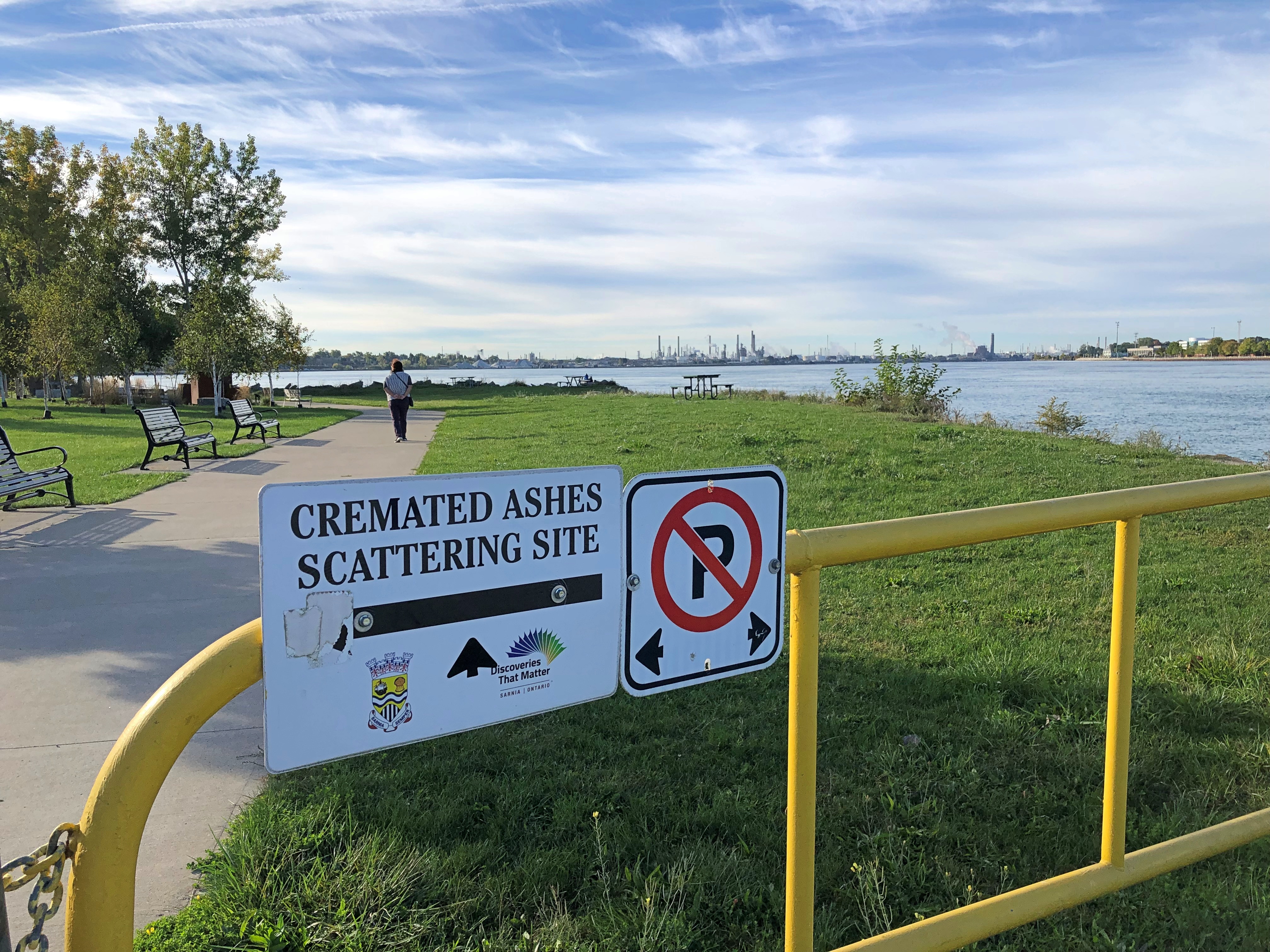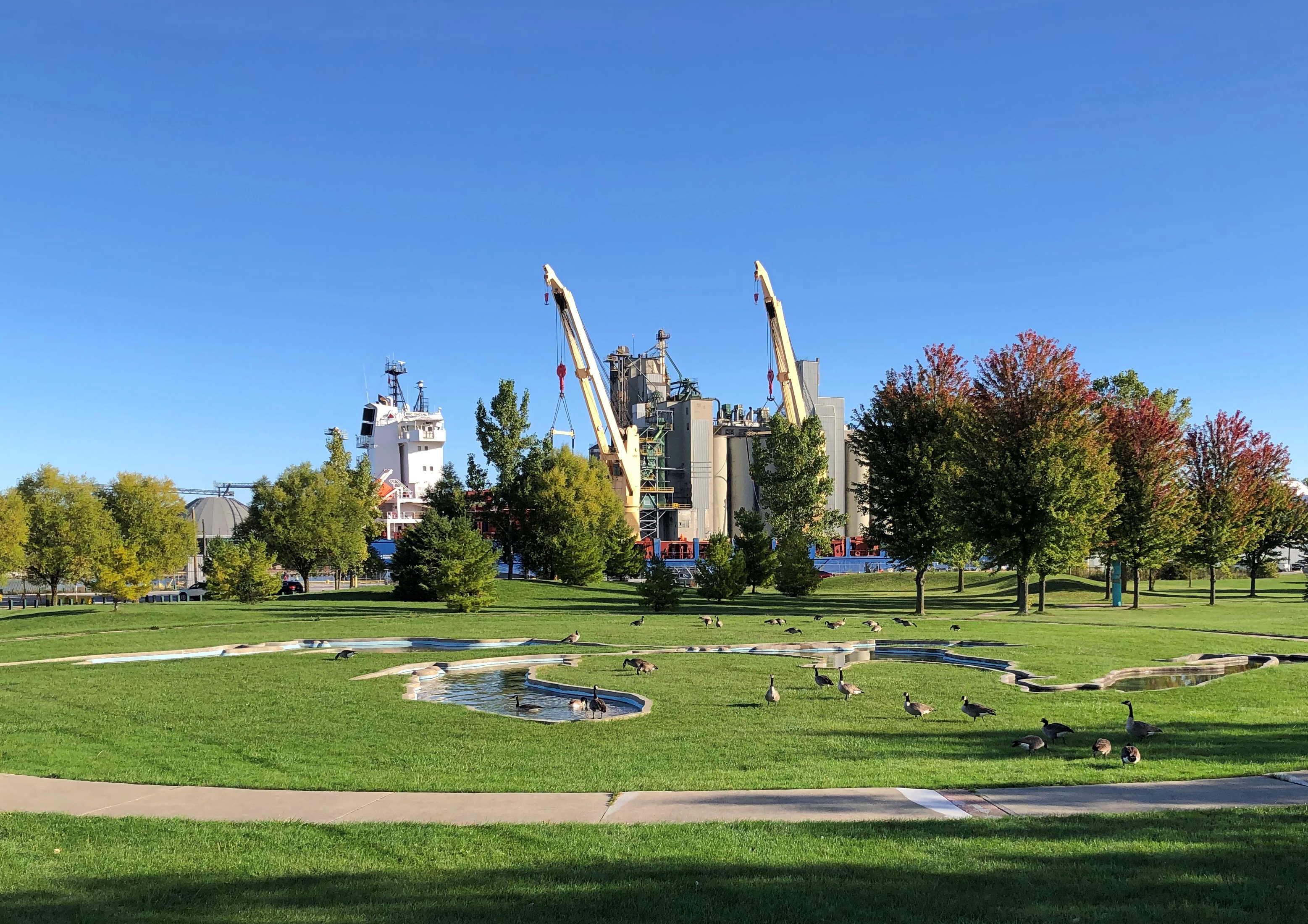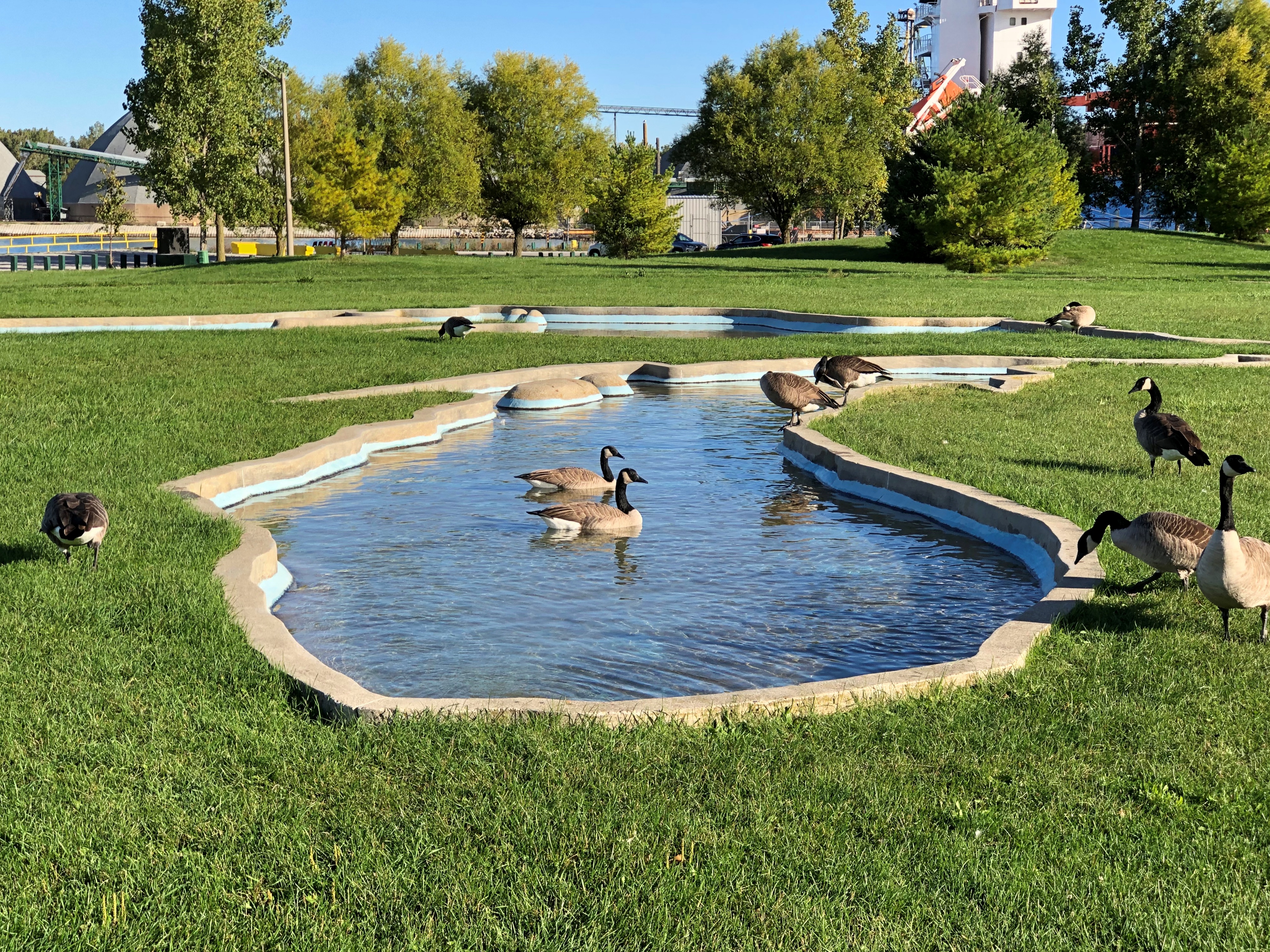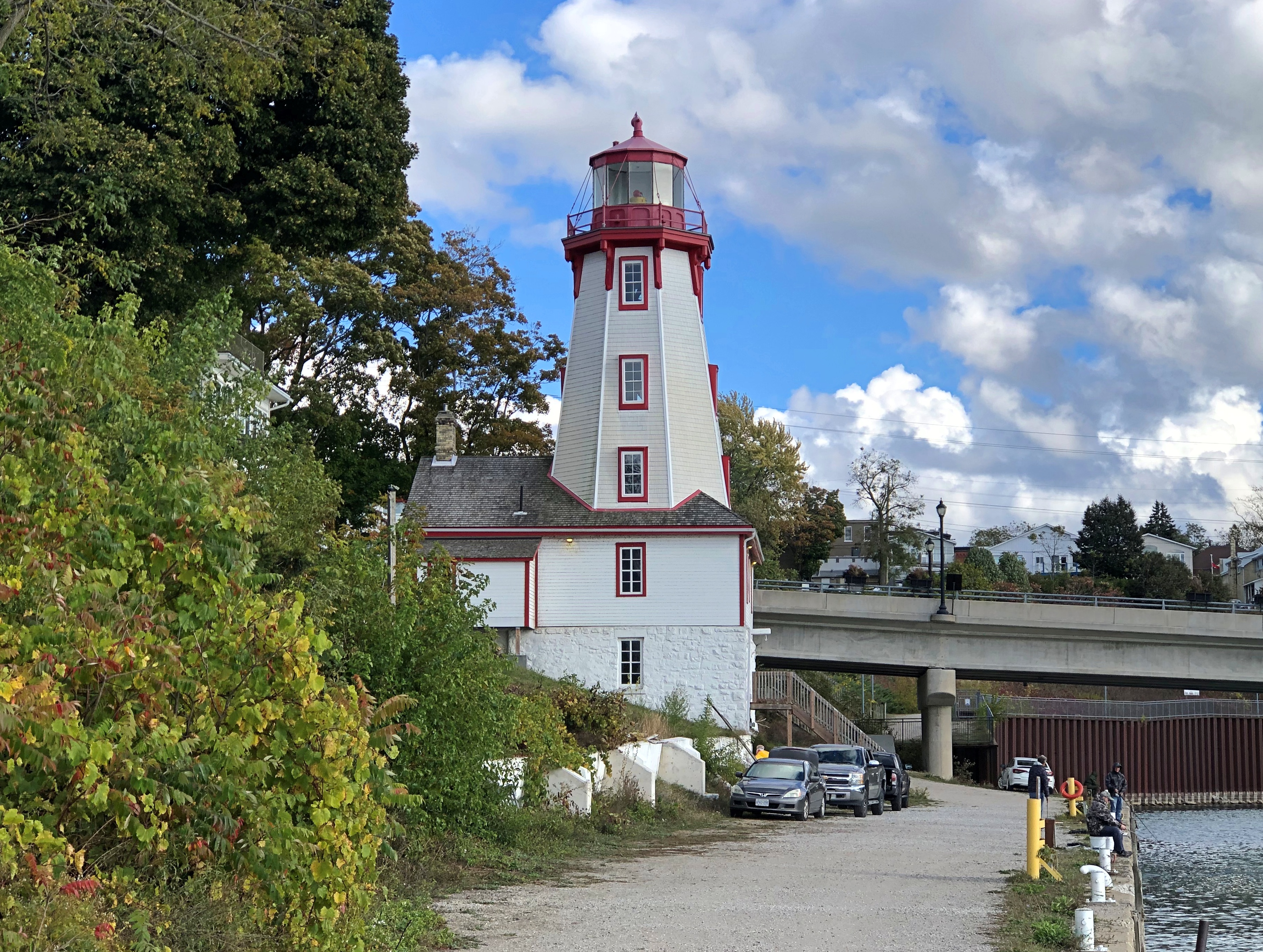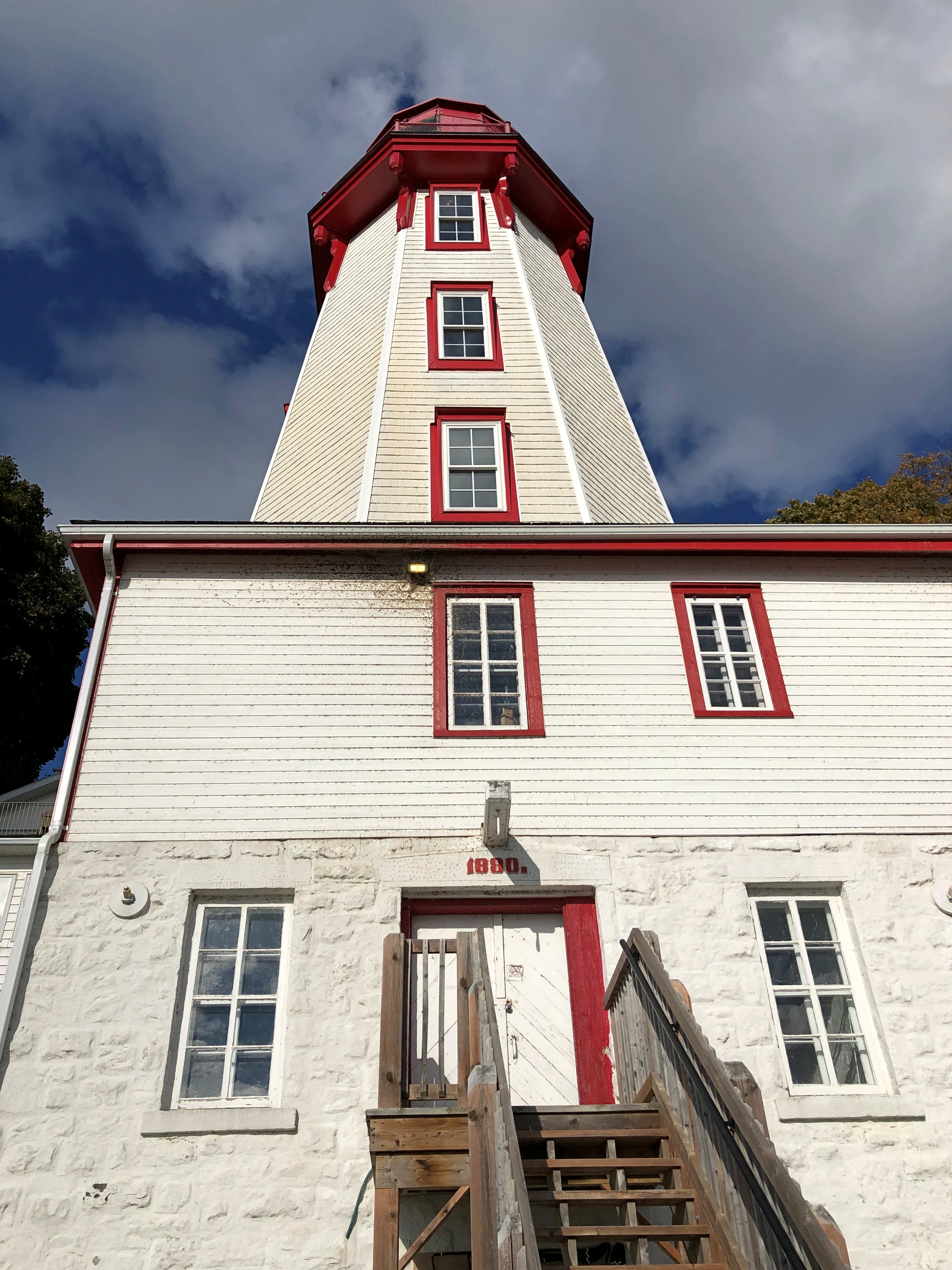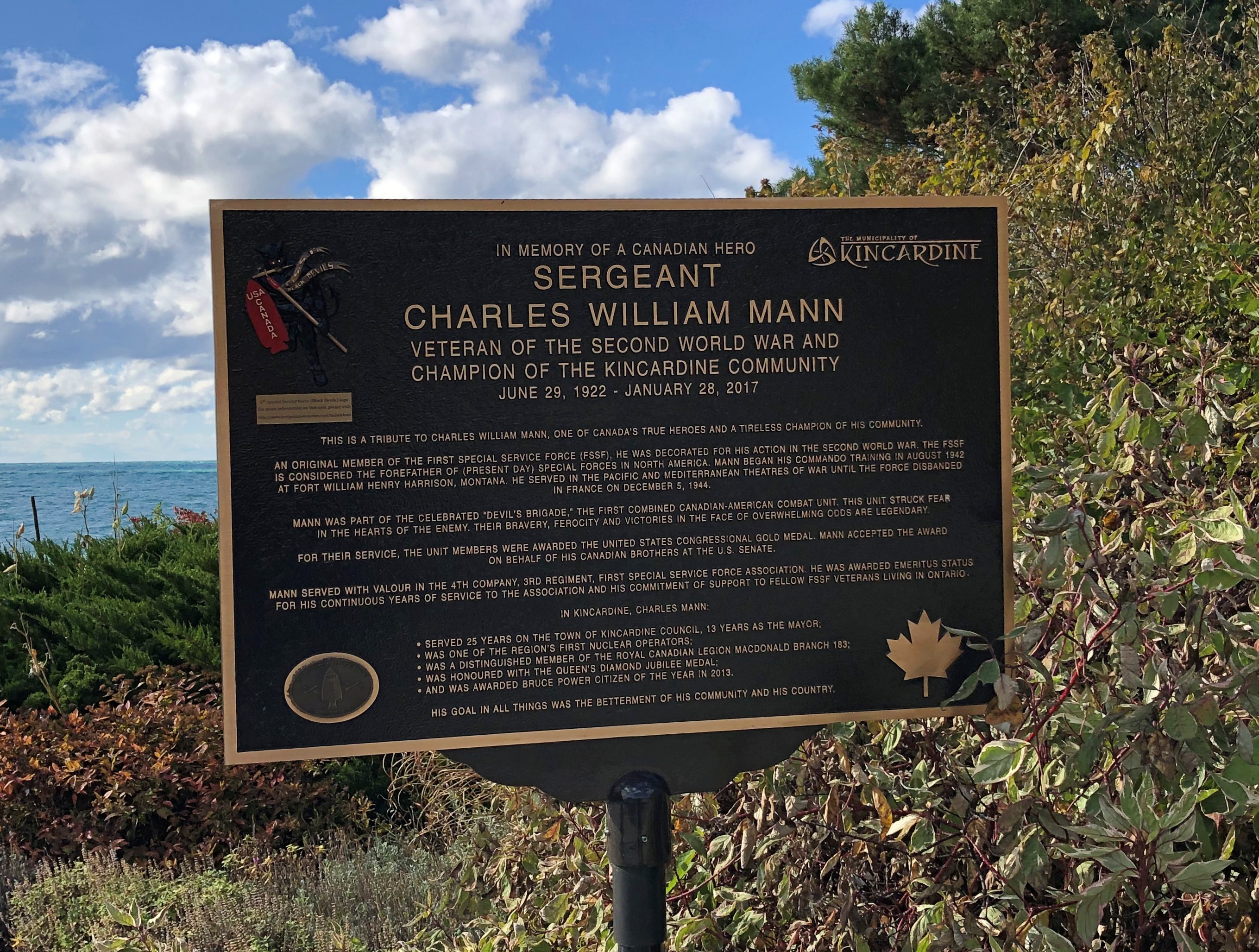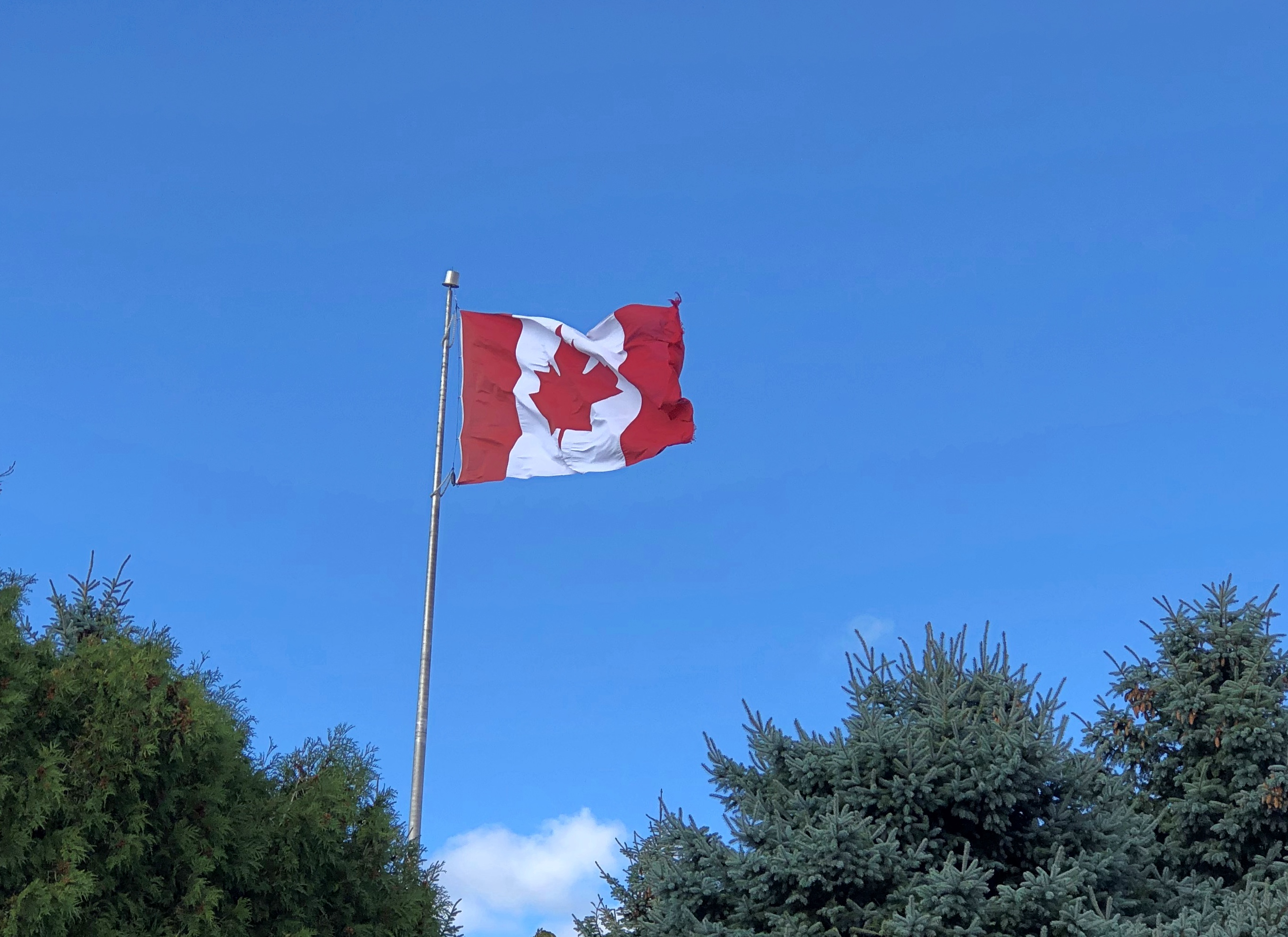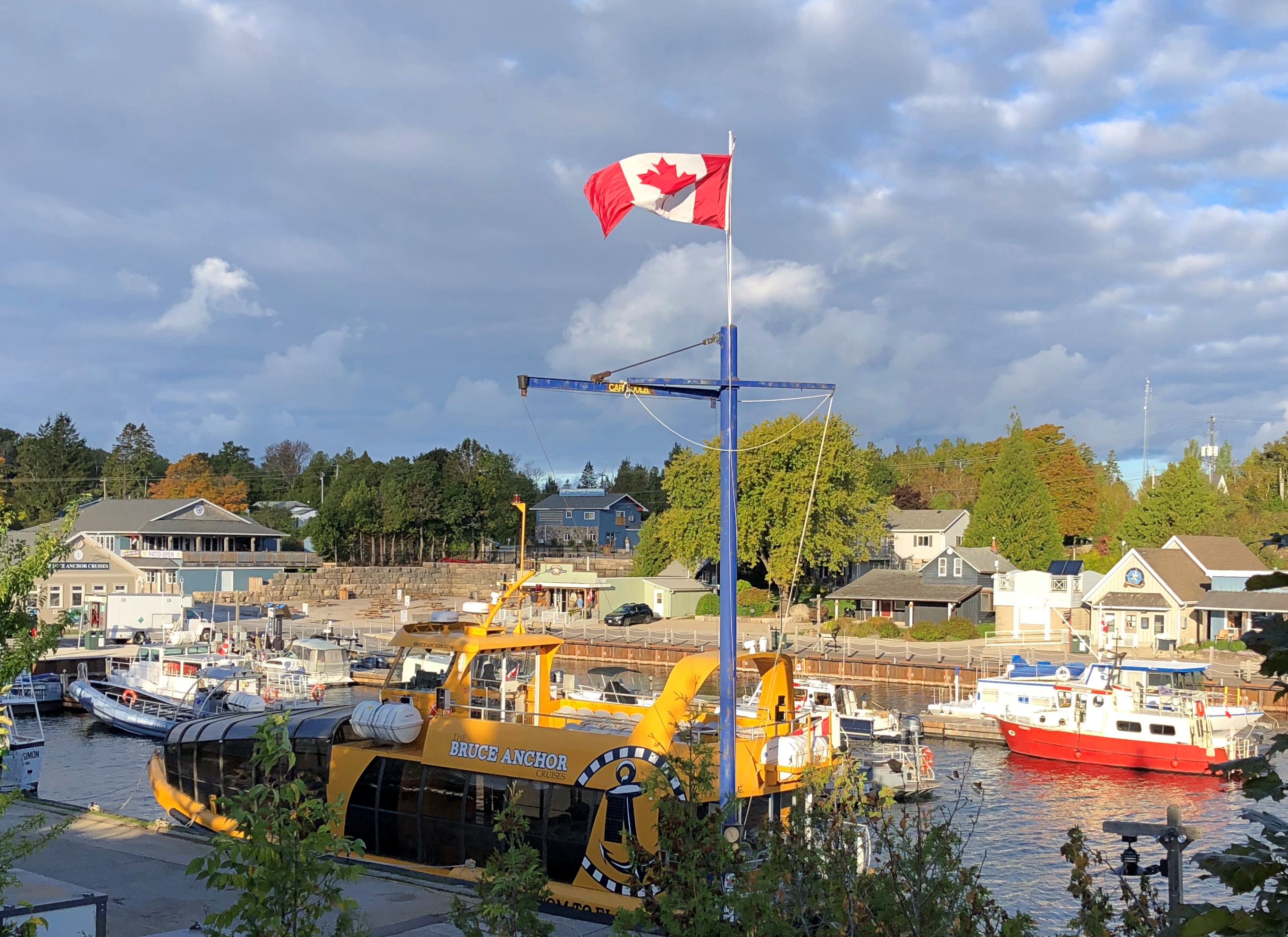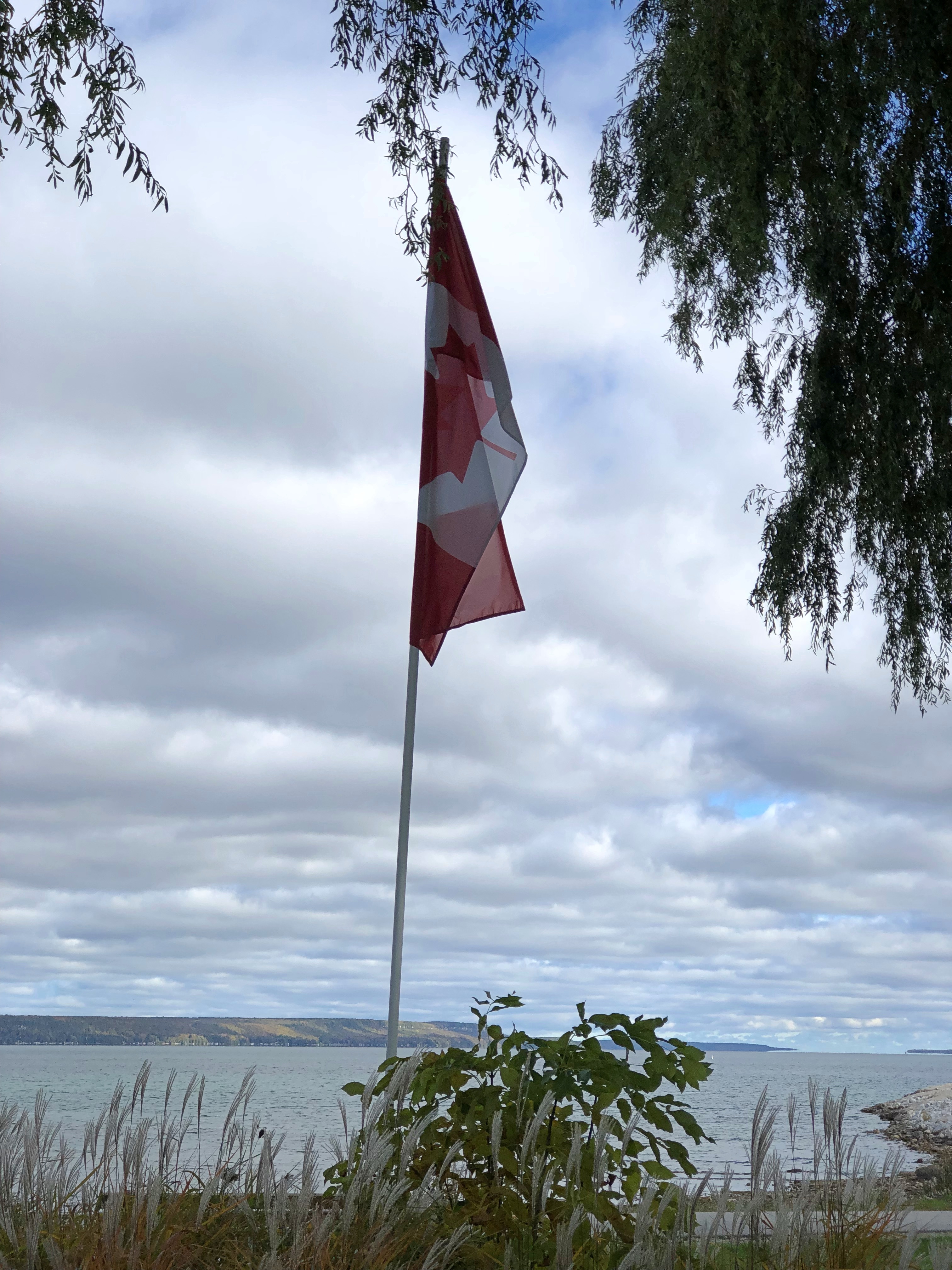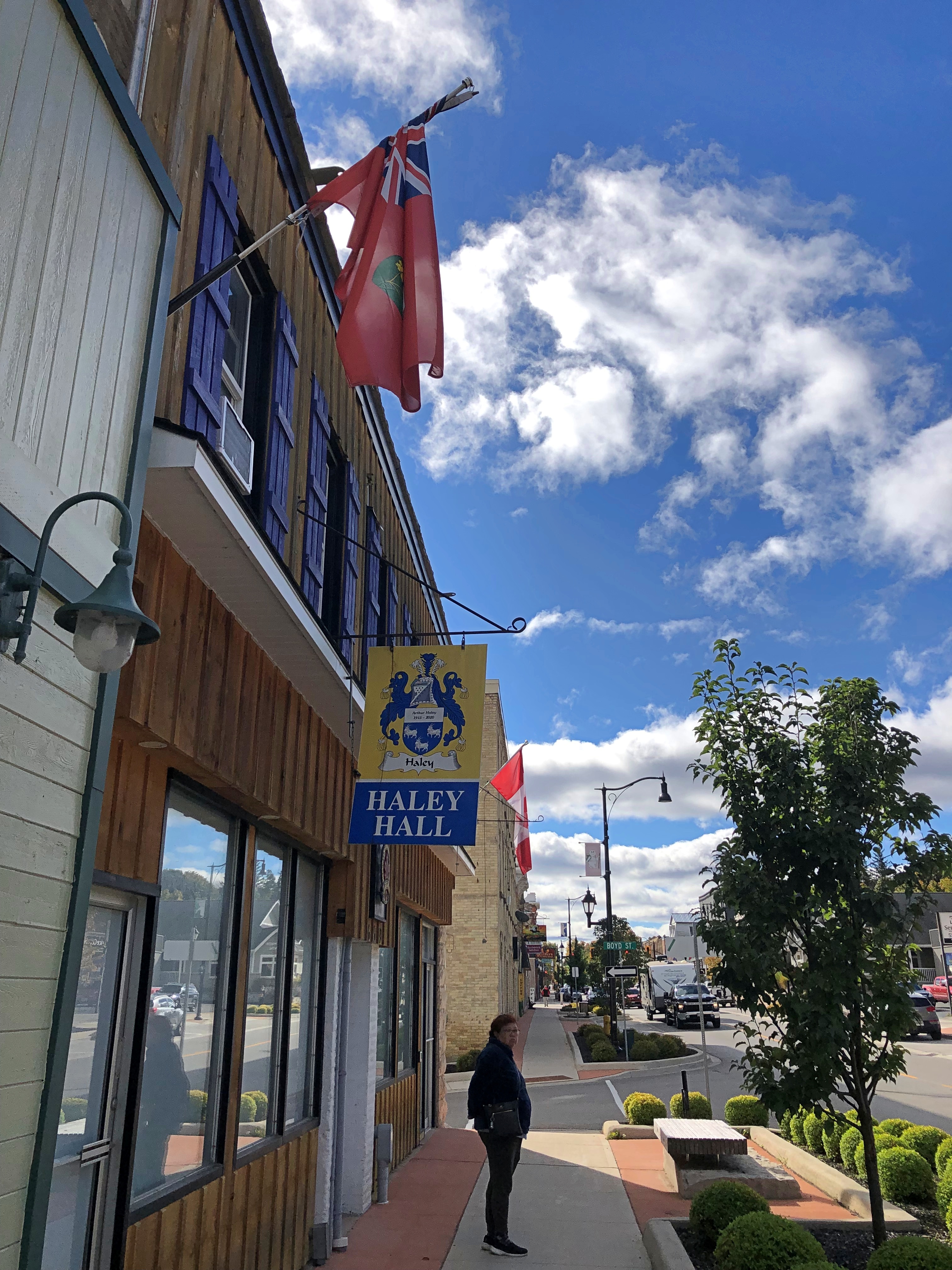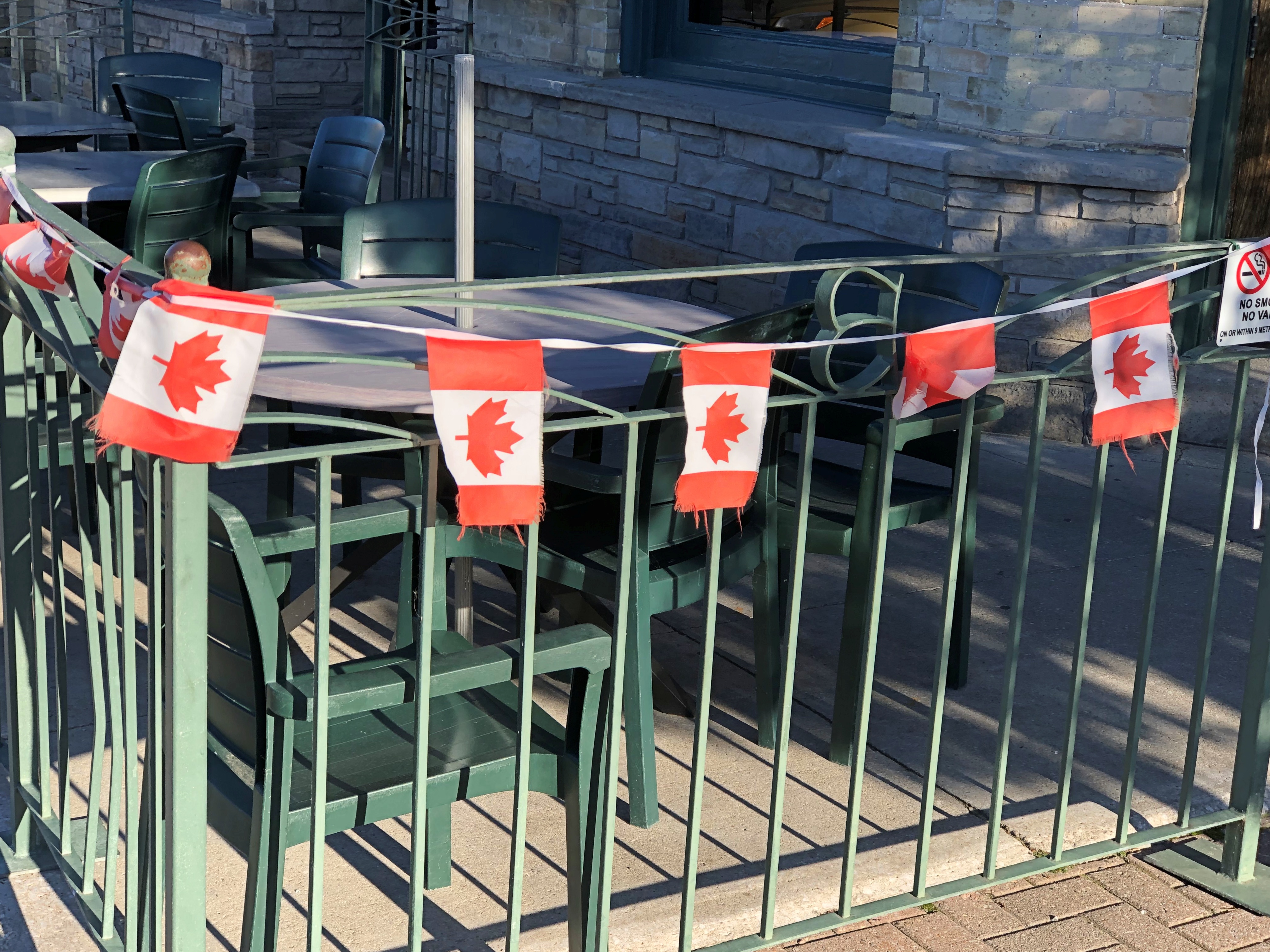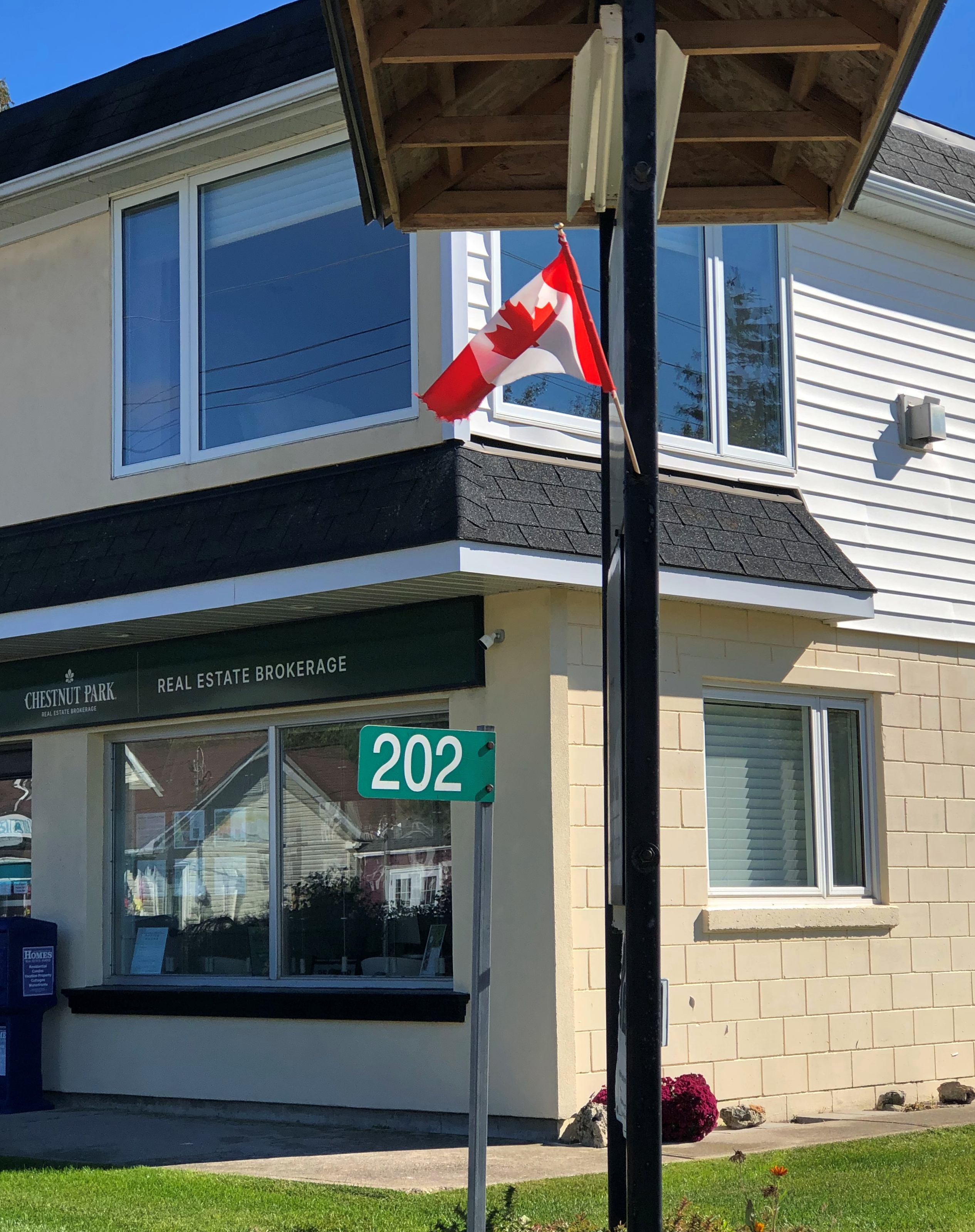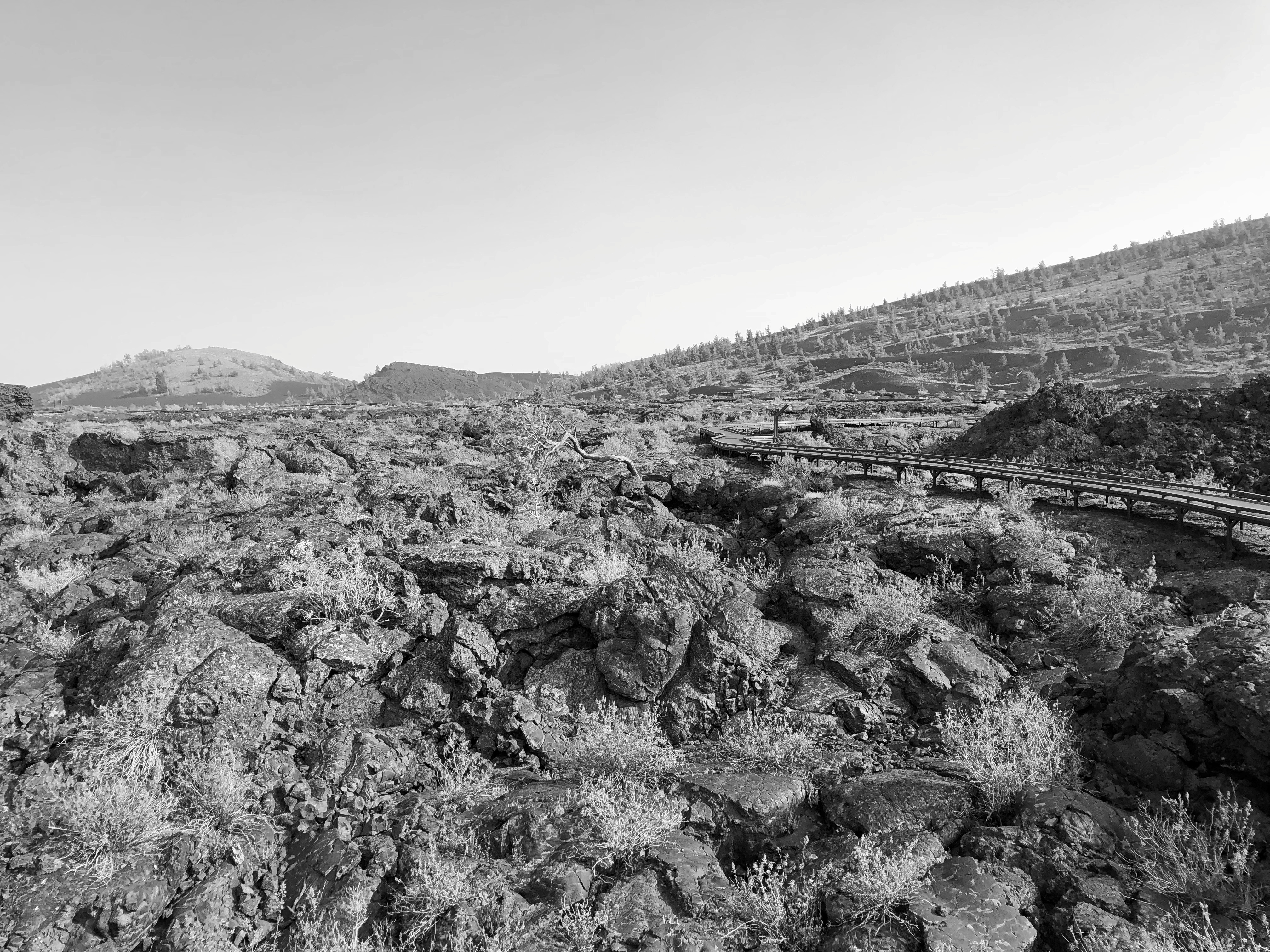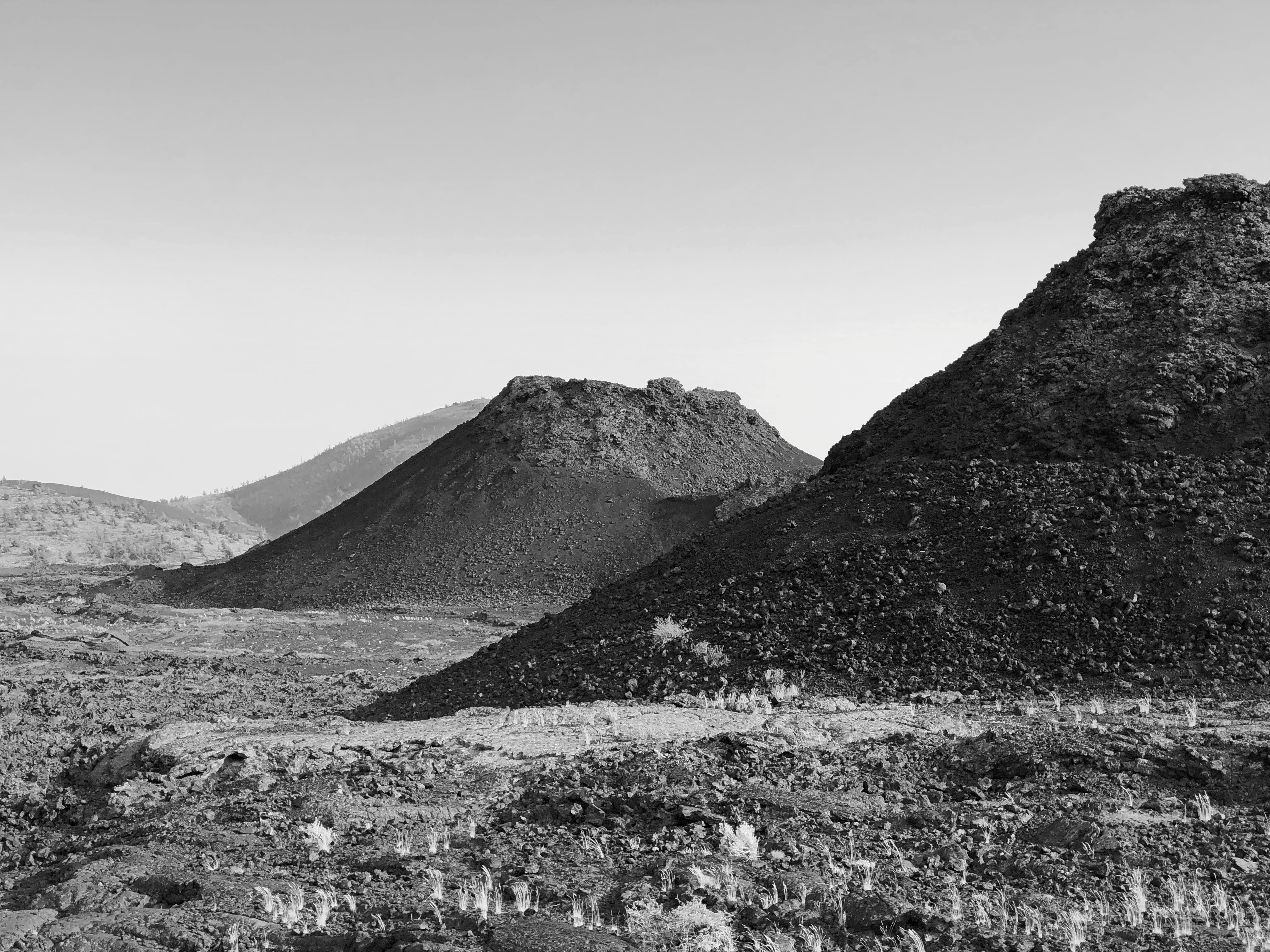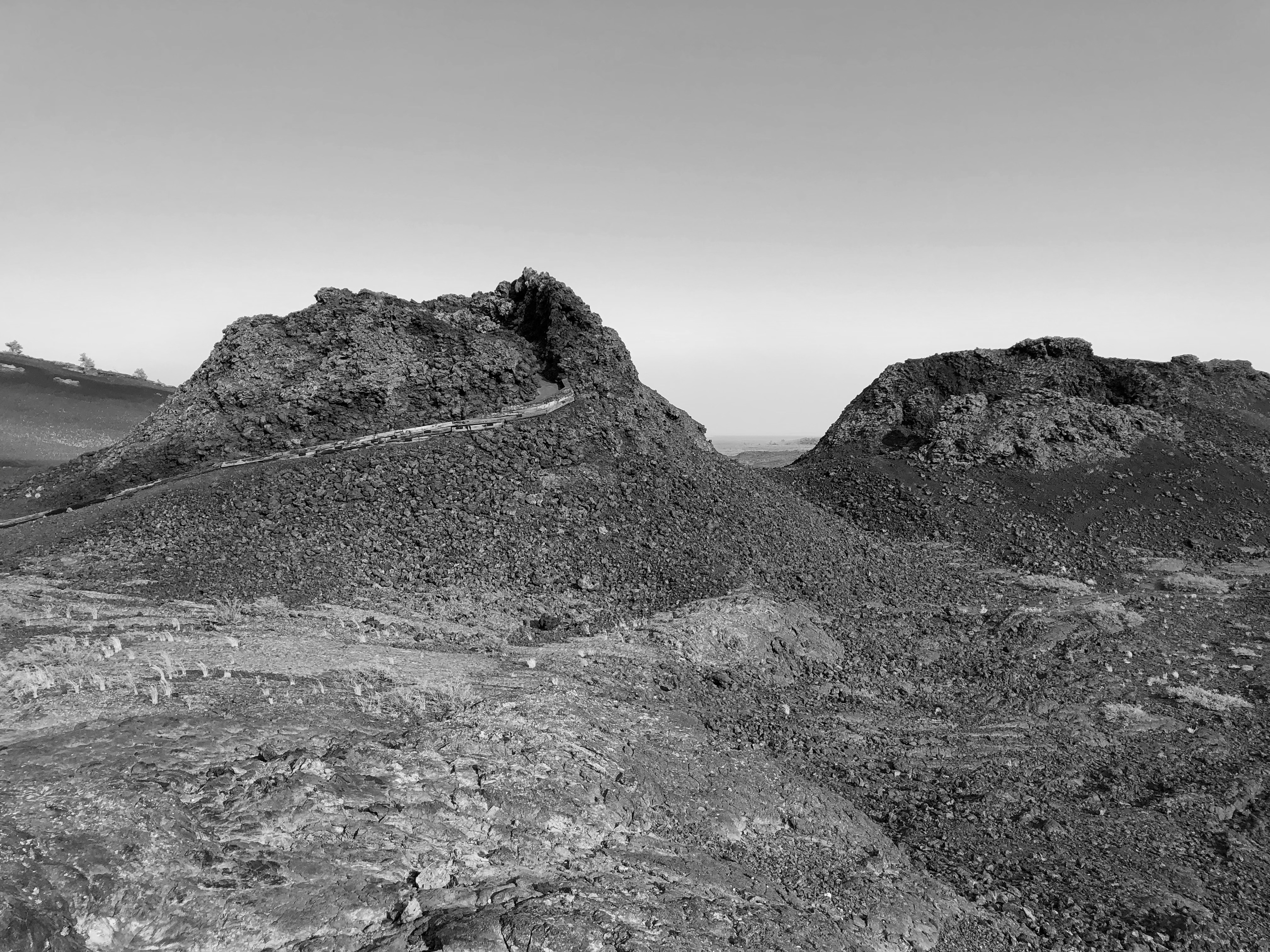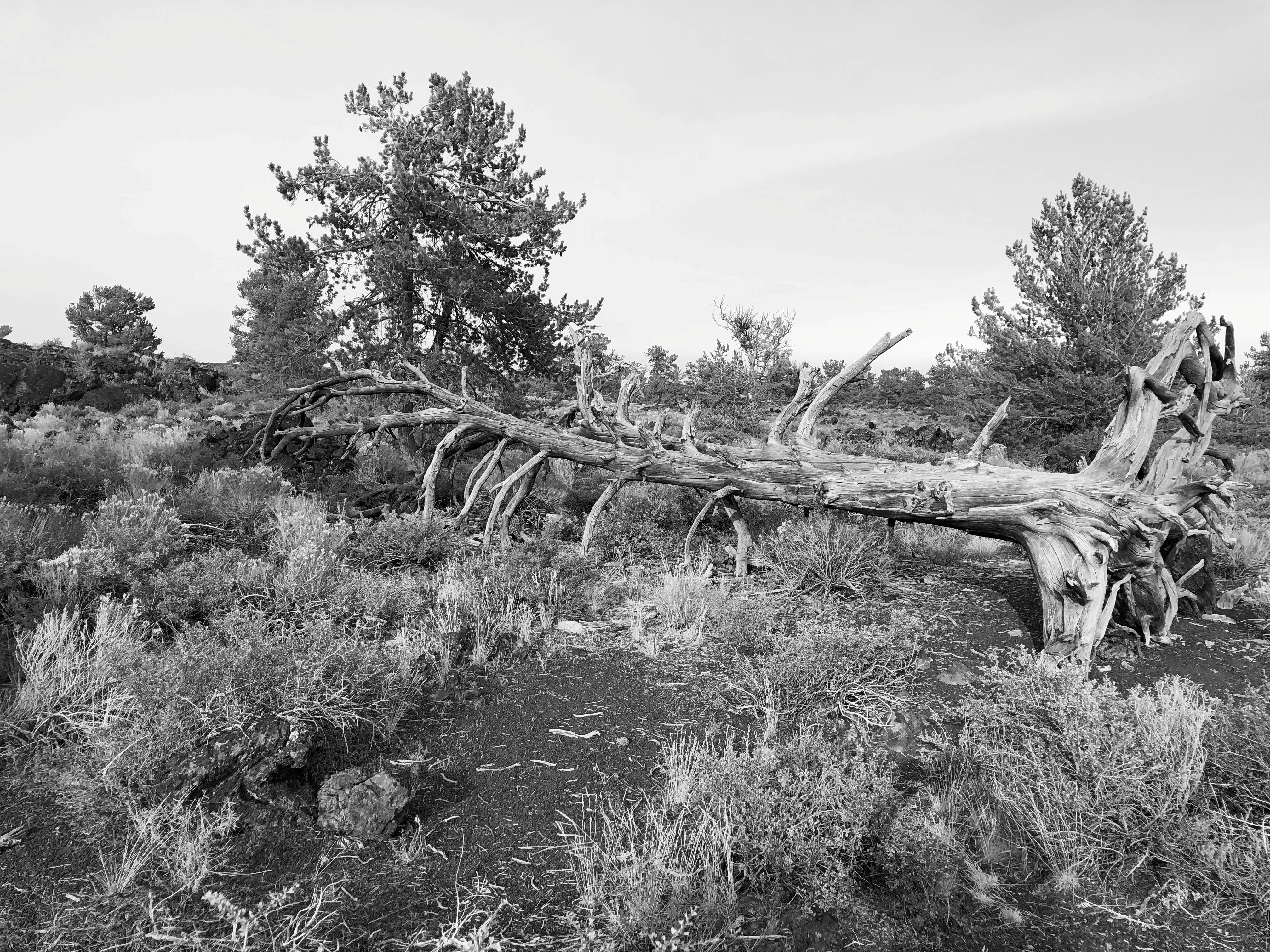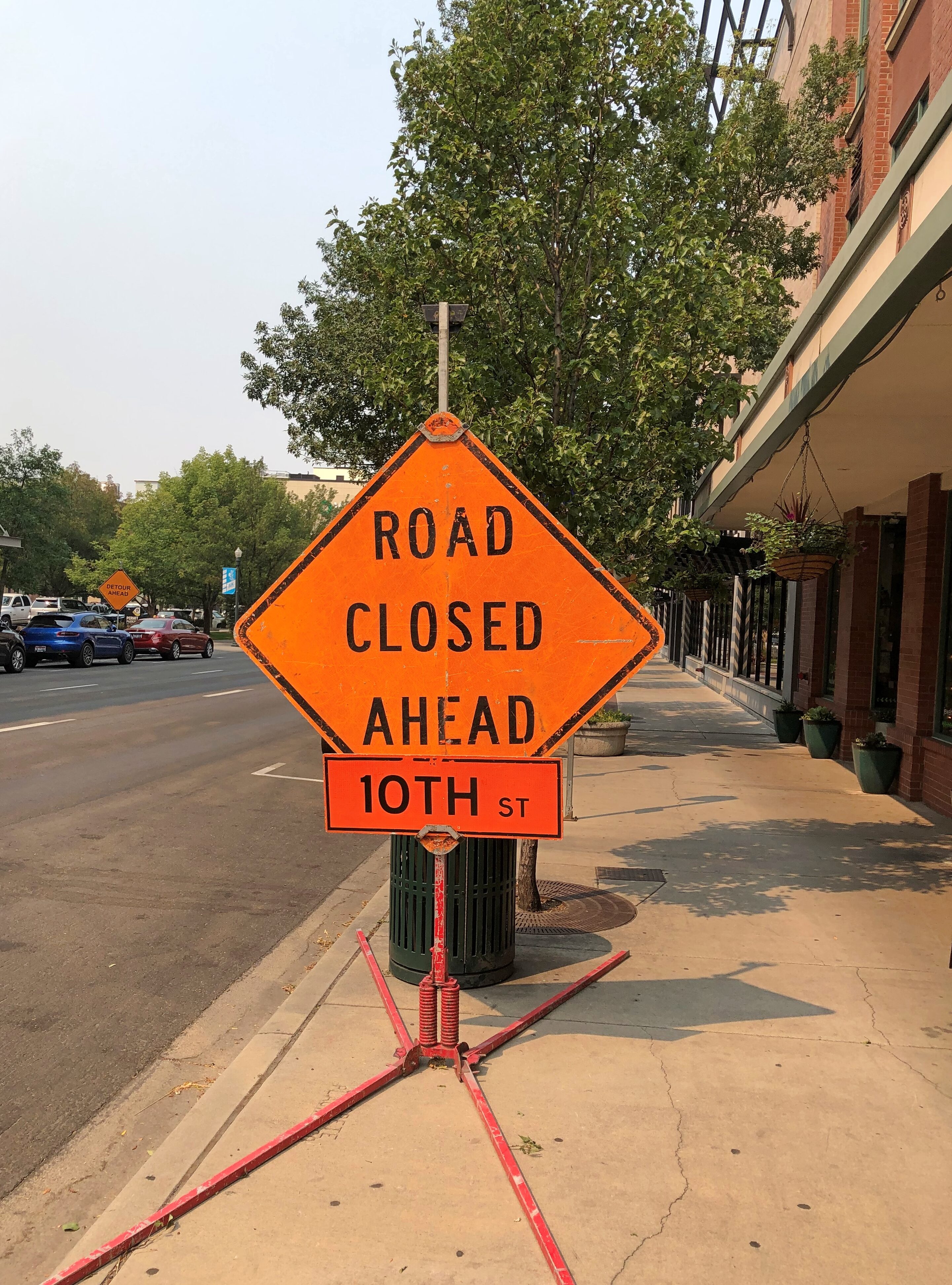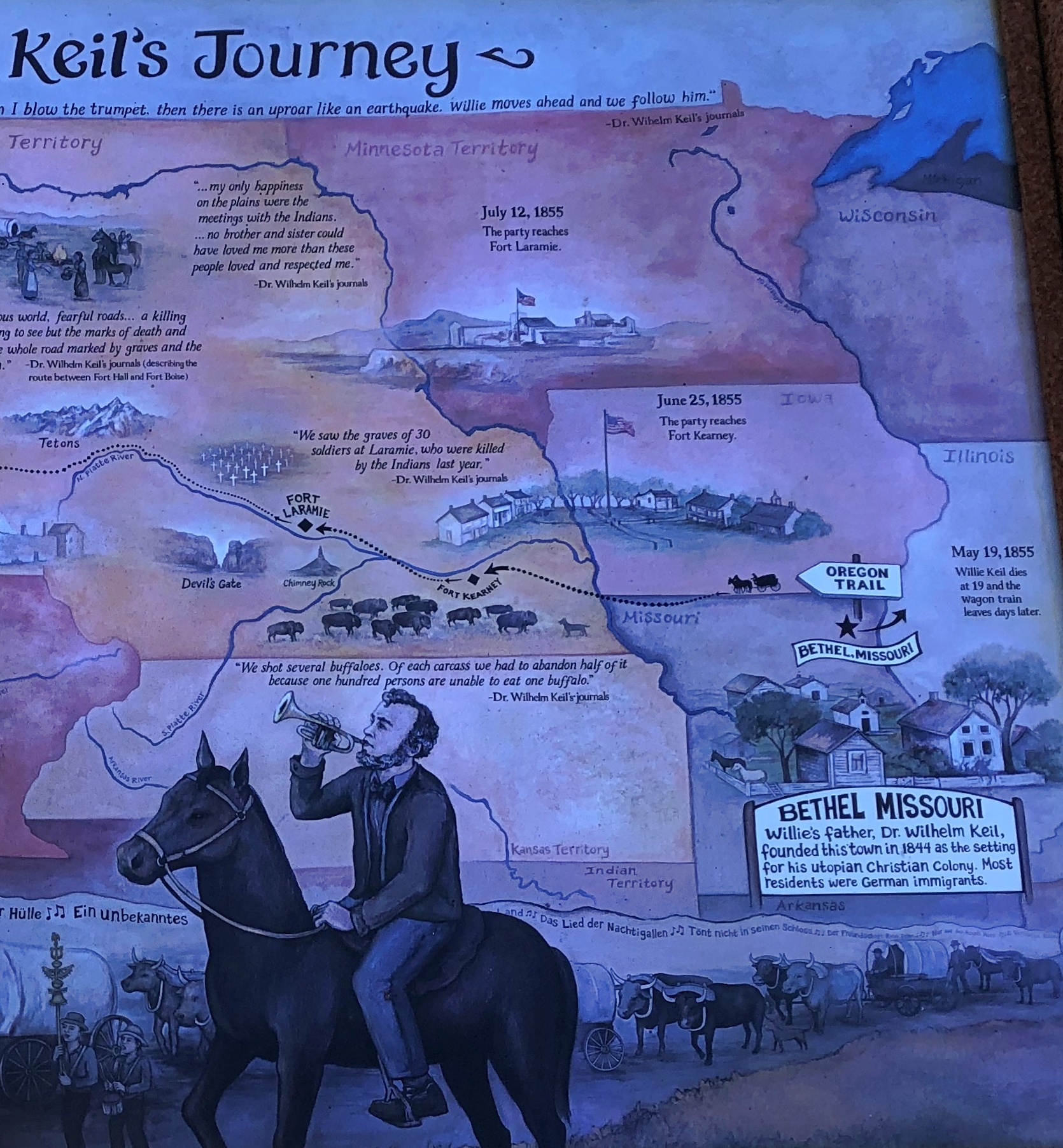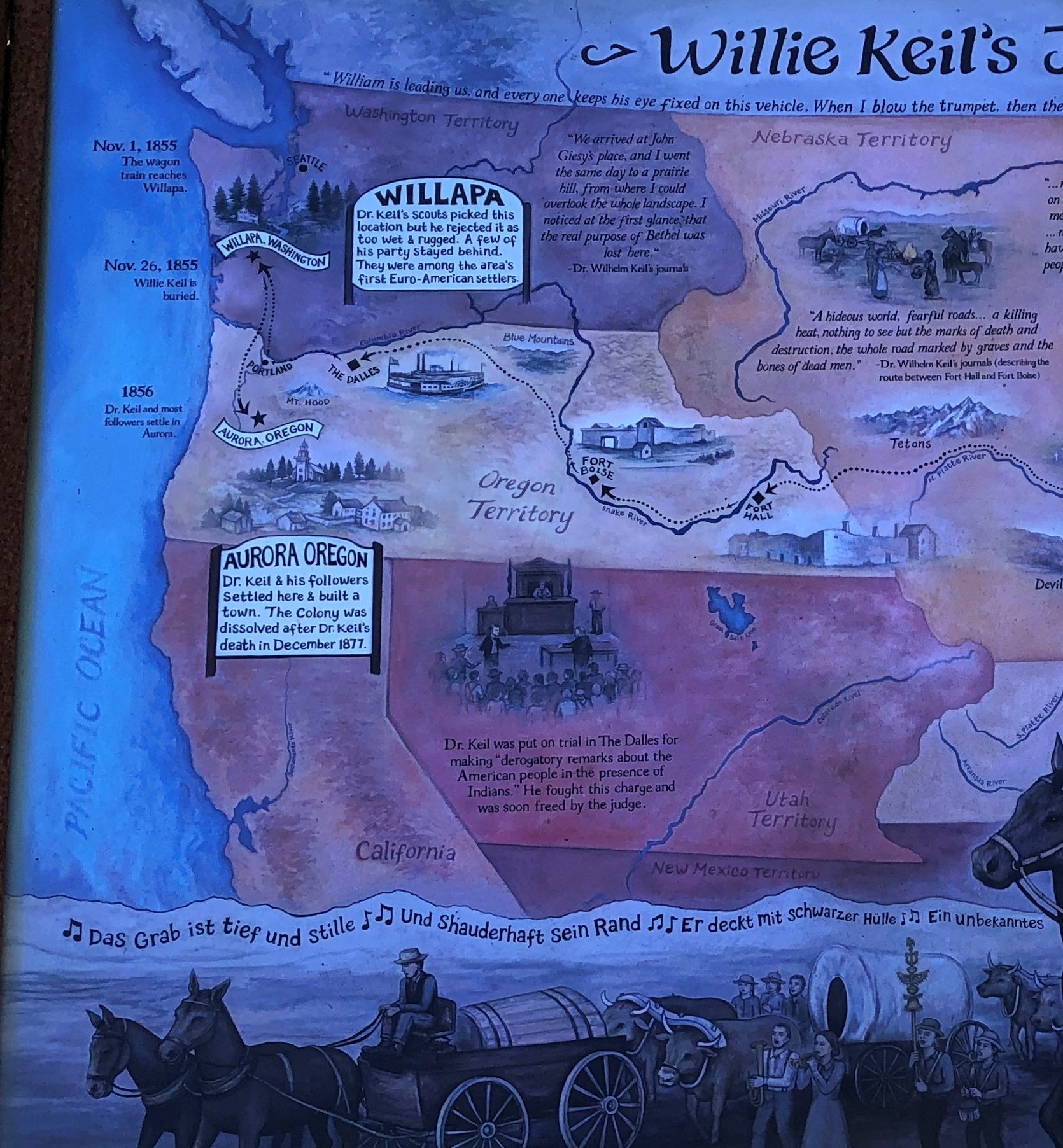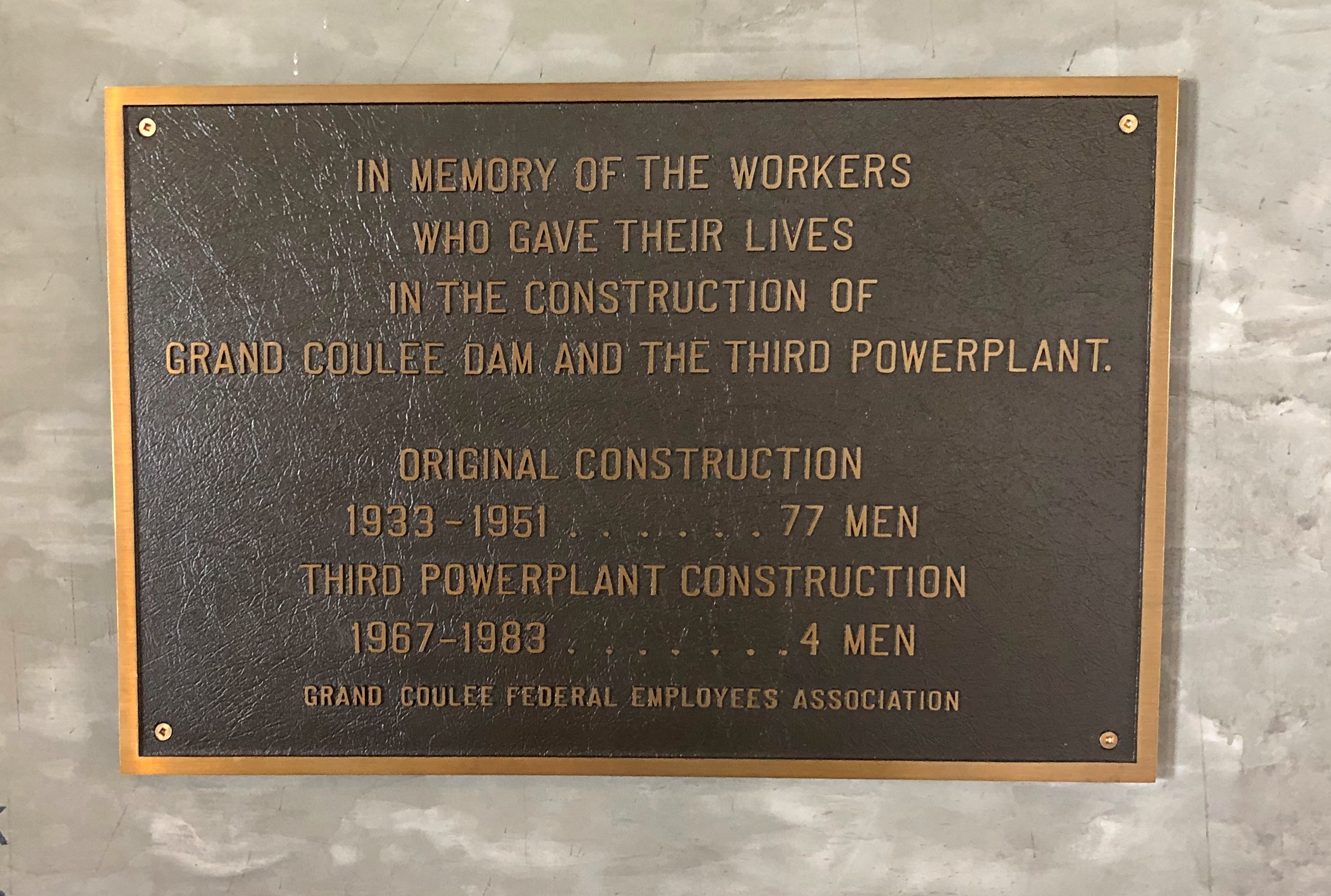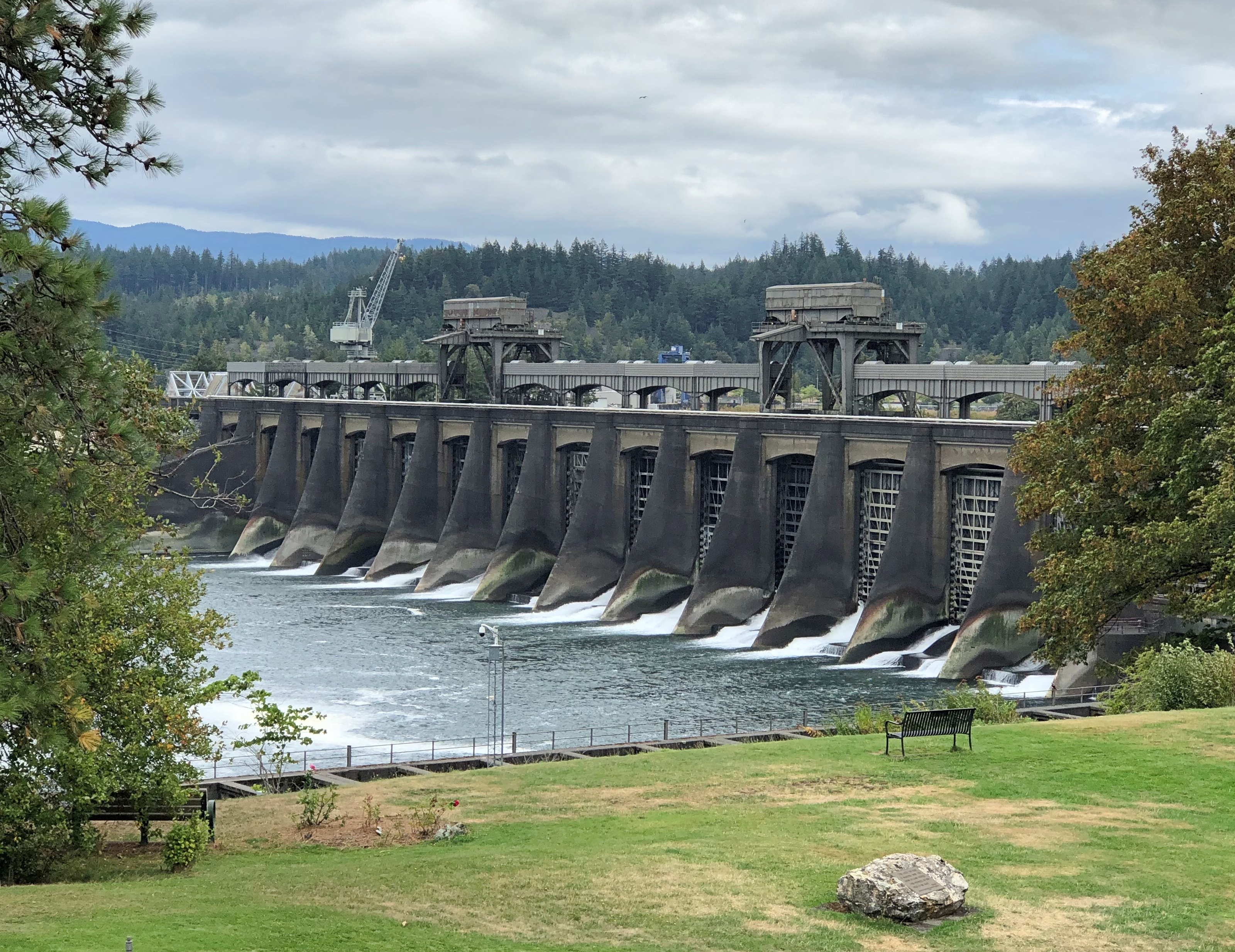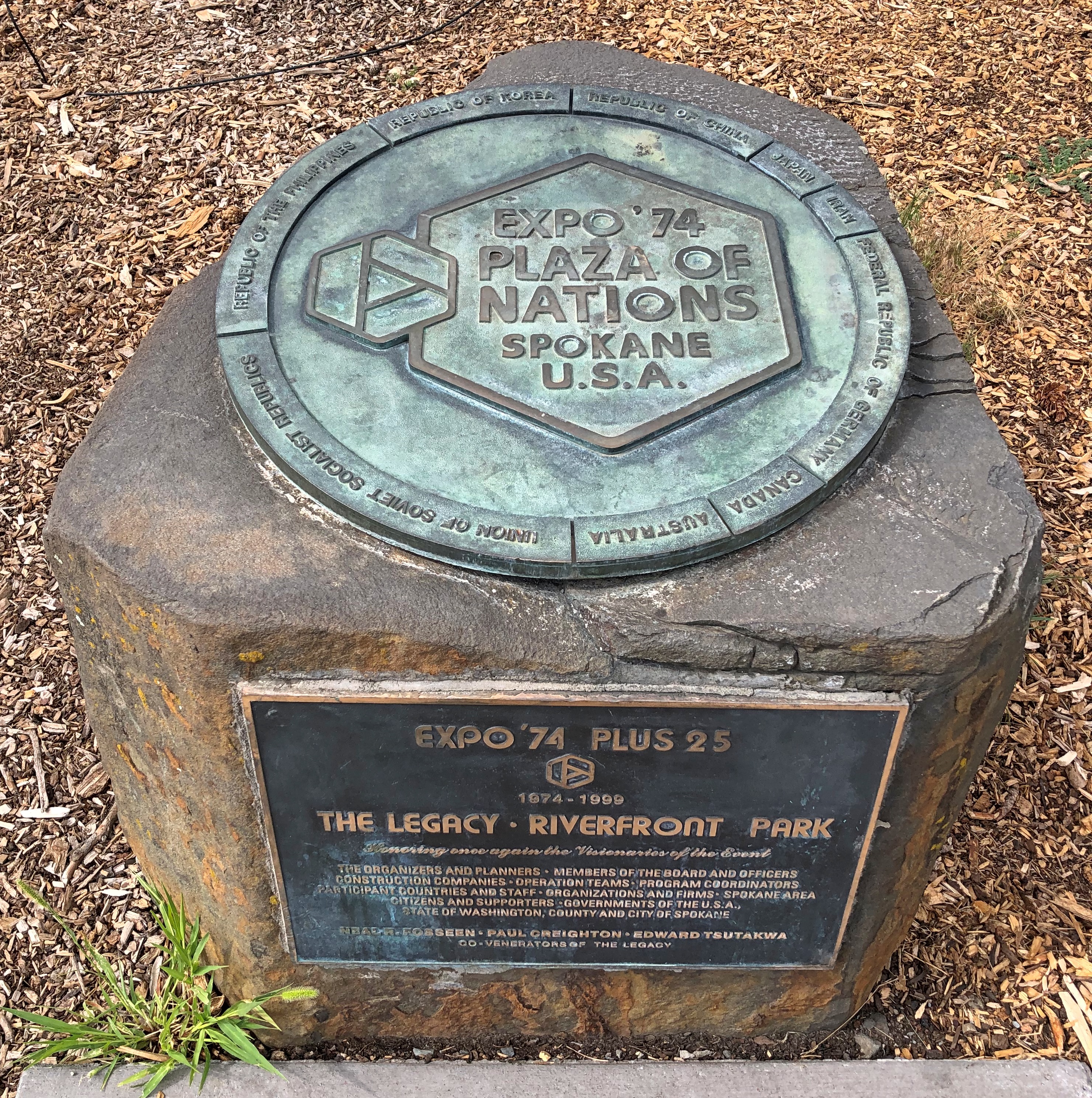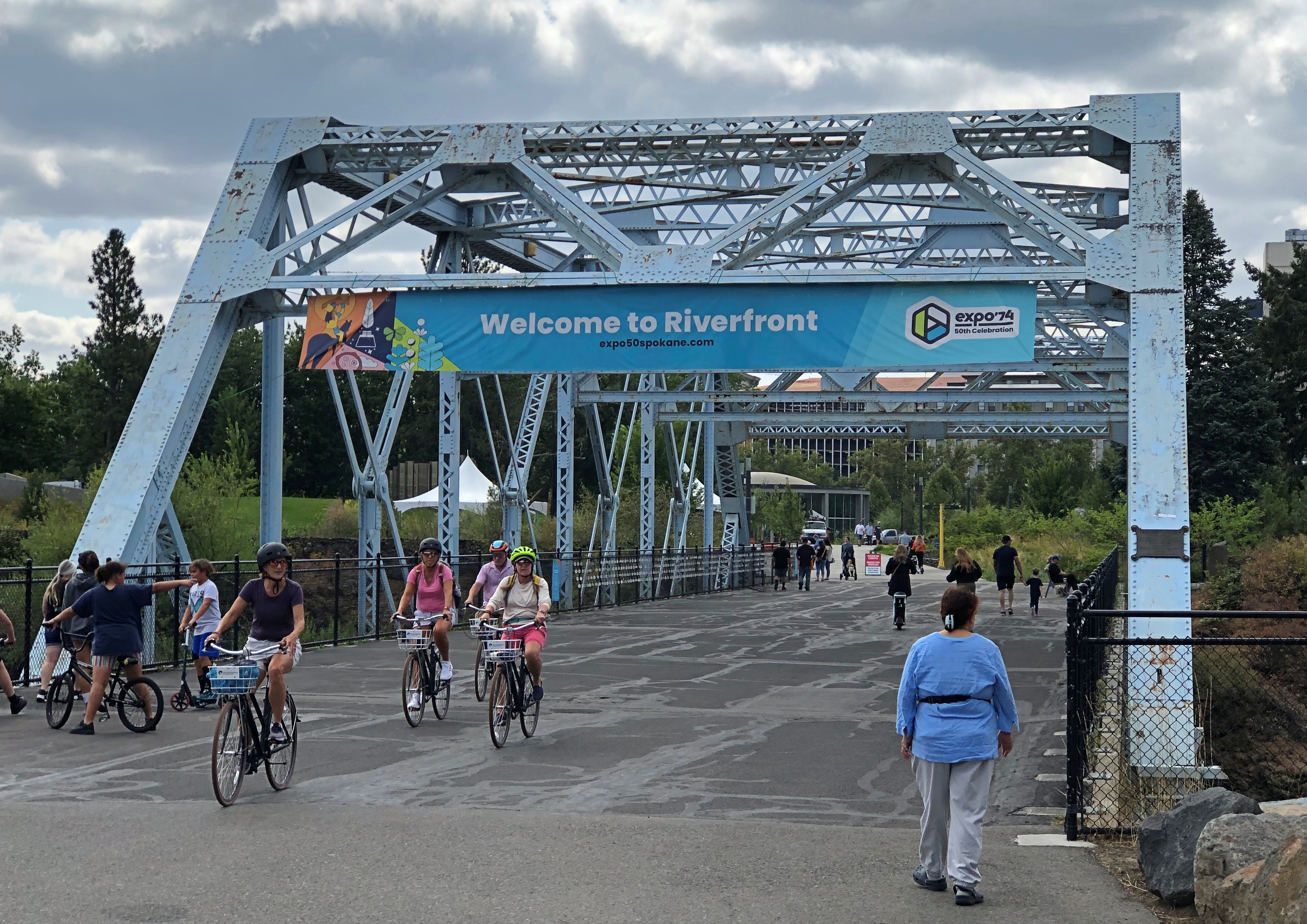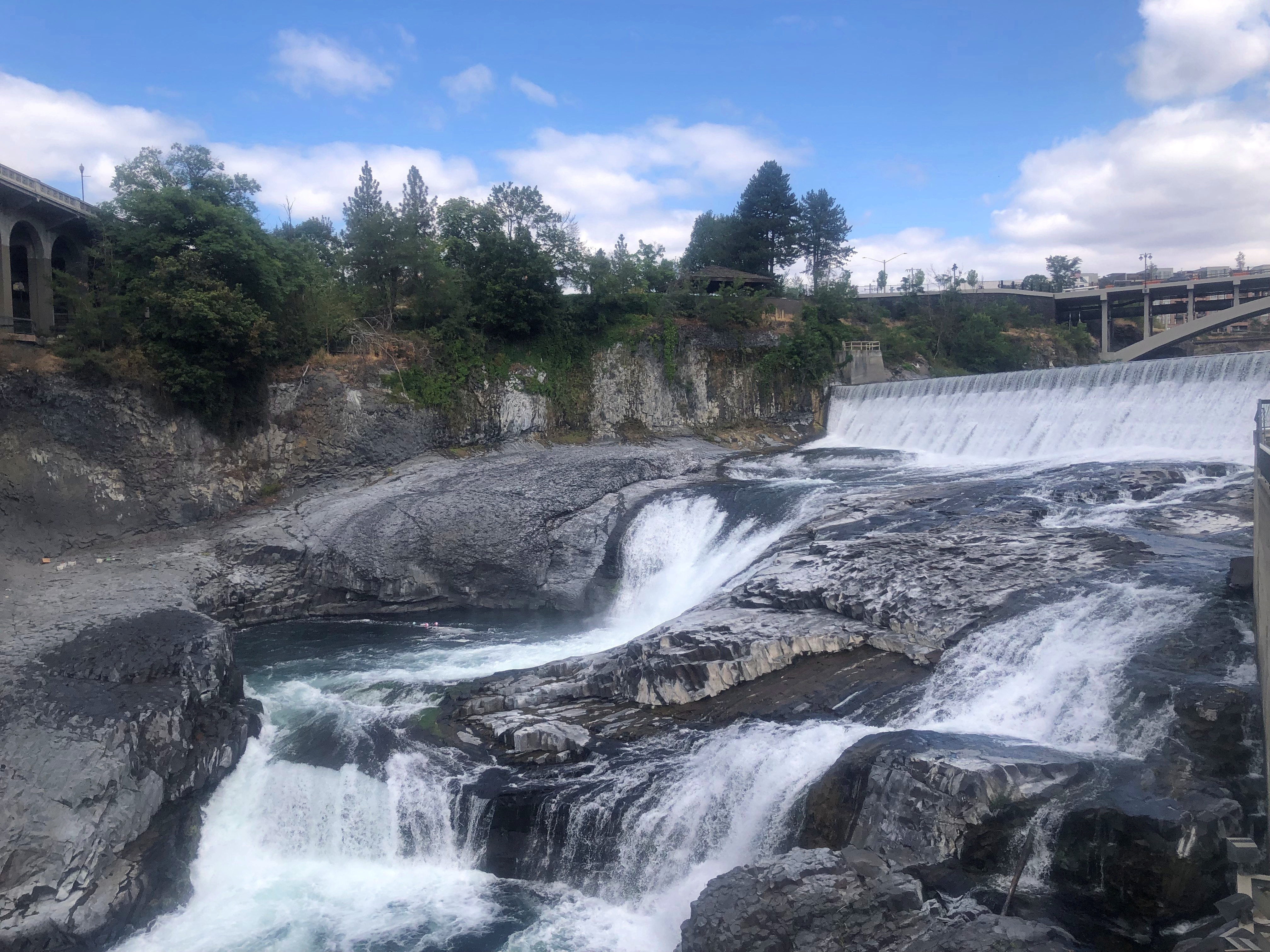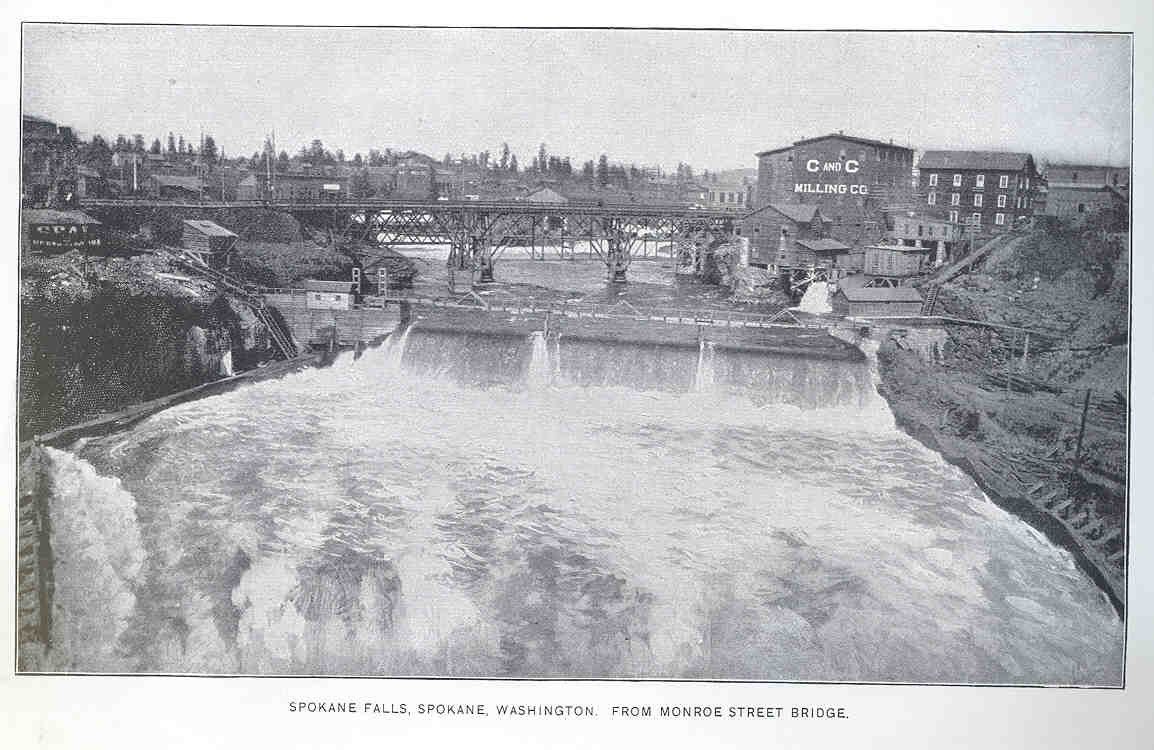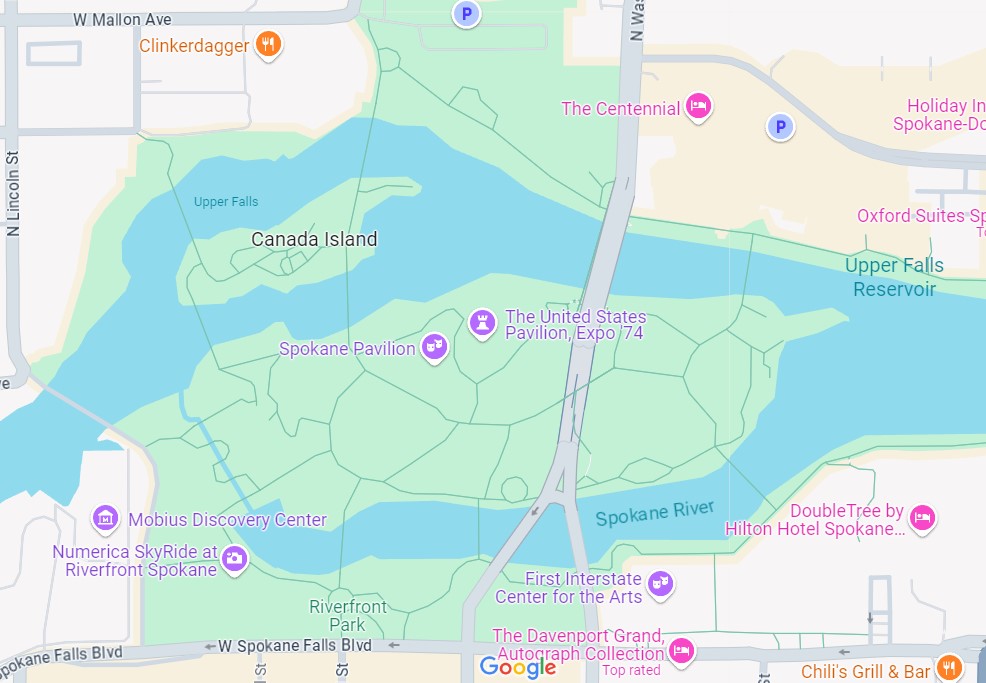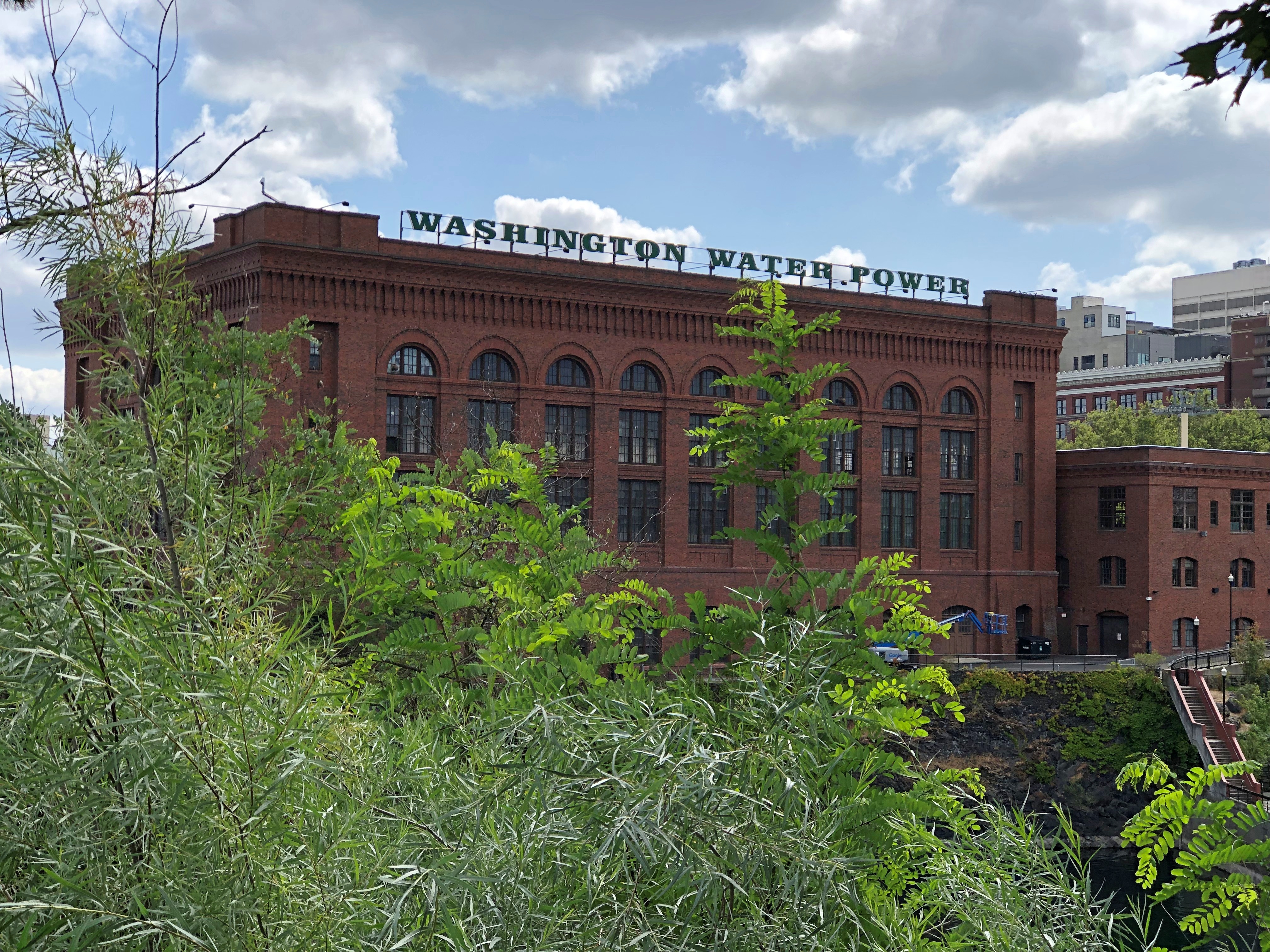A few years ago, Parks Canada, which oversees Bruce Peninsula National Park in Ontario, made noises about changing the name of the park to Saugeen Peninsula NP, after the place name used by the Saugeen Ojibway Nation for the peninsula. The agency started calling the peninsula that, at least internally, and promised a review about the park name. I’d think an actual change would require an act of parliament, but the ways of Canada are mysterious, so I can’t say for sure.
We were merely passing through, but I have a hunch that residents might be attached to “Bruce,” at least for the peninsula itself, so the idea of a name change hasn’t moved forward. Or maybe the process is slow by design. But anyway this was a common sign on the Bruce.
Also, one of the few radio stations receivable on the peninsula is 97.9 FM, The Bruce. If you drive through Port Elgin, as we did twice, you’ll pass the station’s well-marked HQ. If your listen enough, you’ll hear the slogan: Respect the Rock.
In any case, the name remains for now.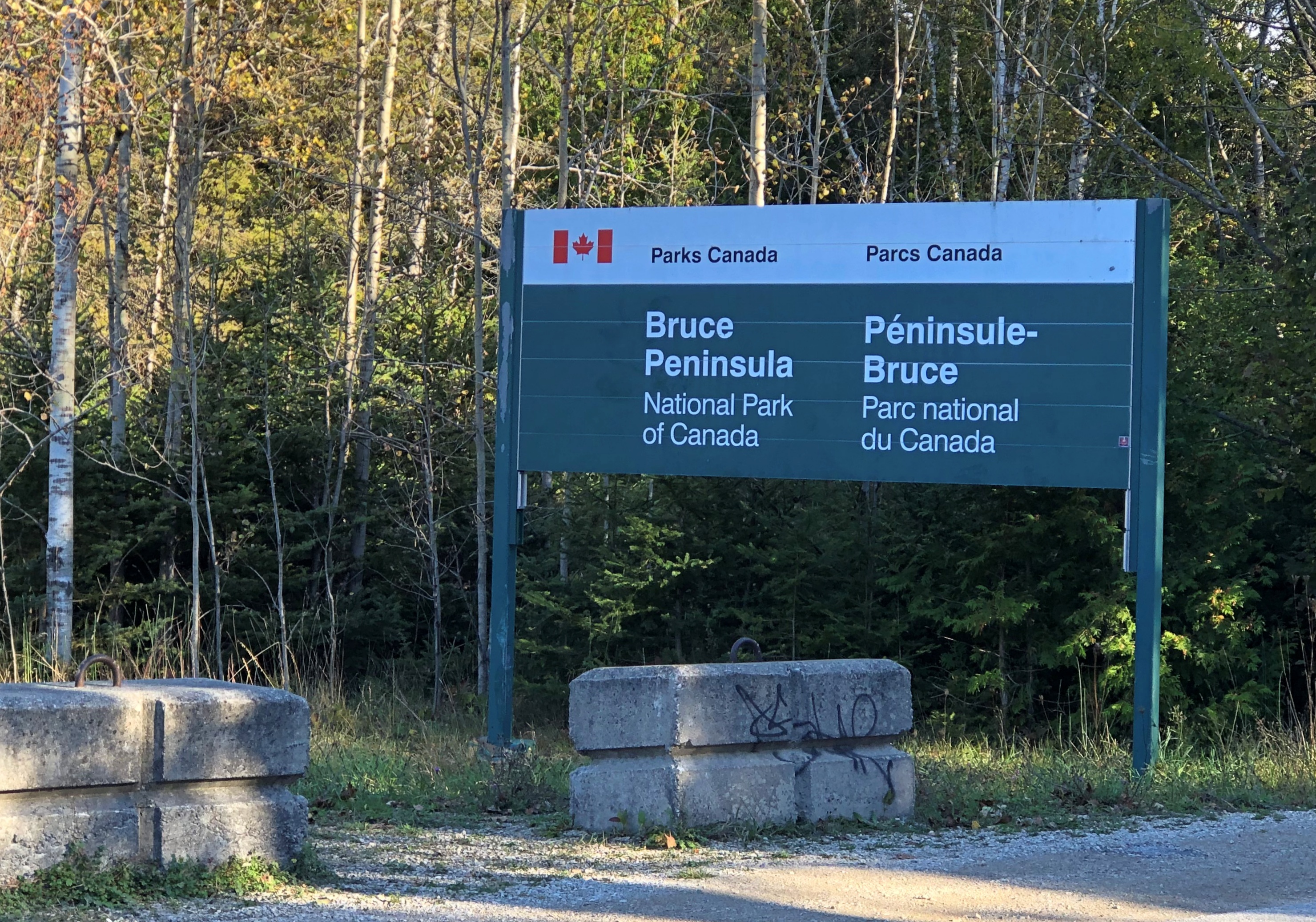
In his time – the 19th century – James Bruce, Eighth Earl of Elgin (d. 1863), was a governor of Jamaica, governor general of the province of Canada, and viceroy of India, among other things. Safe to say, then, that he was an imperialist. Pretty much a textbook example. Also, at another point in his career, he ordered the destruction of the Old Summer Palace in Beijing. Oops.
On the other hand, Bruce is a pretty solid name. Maybe the relevant board or committee can declare the peninsula to be named in honor of the entire Clan Bruce, who were so important in the history of Scotland, and whose doughty descendants can be found throughout Canada. That’s a pretty good example of lateral thinking, if I say so myself.
We came to BPNP last week on Wednesday morning (October 9), because this ship wasn’t sailing.
We’d booked round-trip passage to a place called Flowerpot Island, one of the peninsula’s picturesque offshore islands and part of Fathom Five National Marine Park, intending to stay much of the day. But the wind was up, and early that morning, the tour company sent a cancellation notice via email (and we got a refund).
Then we went through a minor amount of rigmarole to change our parking permit at BPNP, because while admission to the park isn’t timed, parking at the park is. We’d planned on visiting the next morning (October 10), before leaving for London. As it turned out, hiking around the Bruce took a fair amount of energy, so best to do it the day before a longish drive, not the same day as a longish drive. Sometimes adjustments on the road work out better.
Our first hike in the national park was simple enough, in theory – out to Georgian Bay, along the edge of Georgian Bay, back from Georgian Bay to the parking lot we’d finagled an early spot in.
The path to Georgian Bay, most of the way along a shallow lake.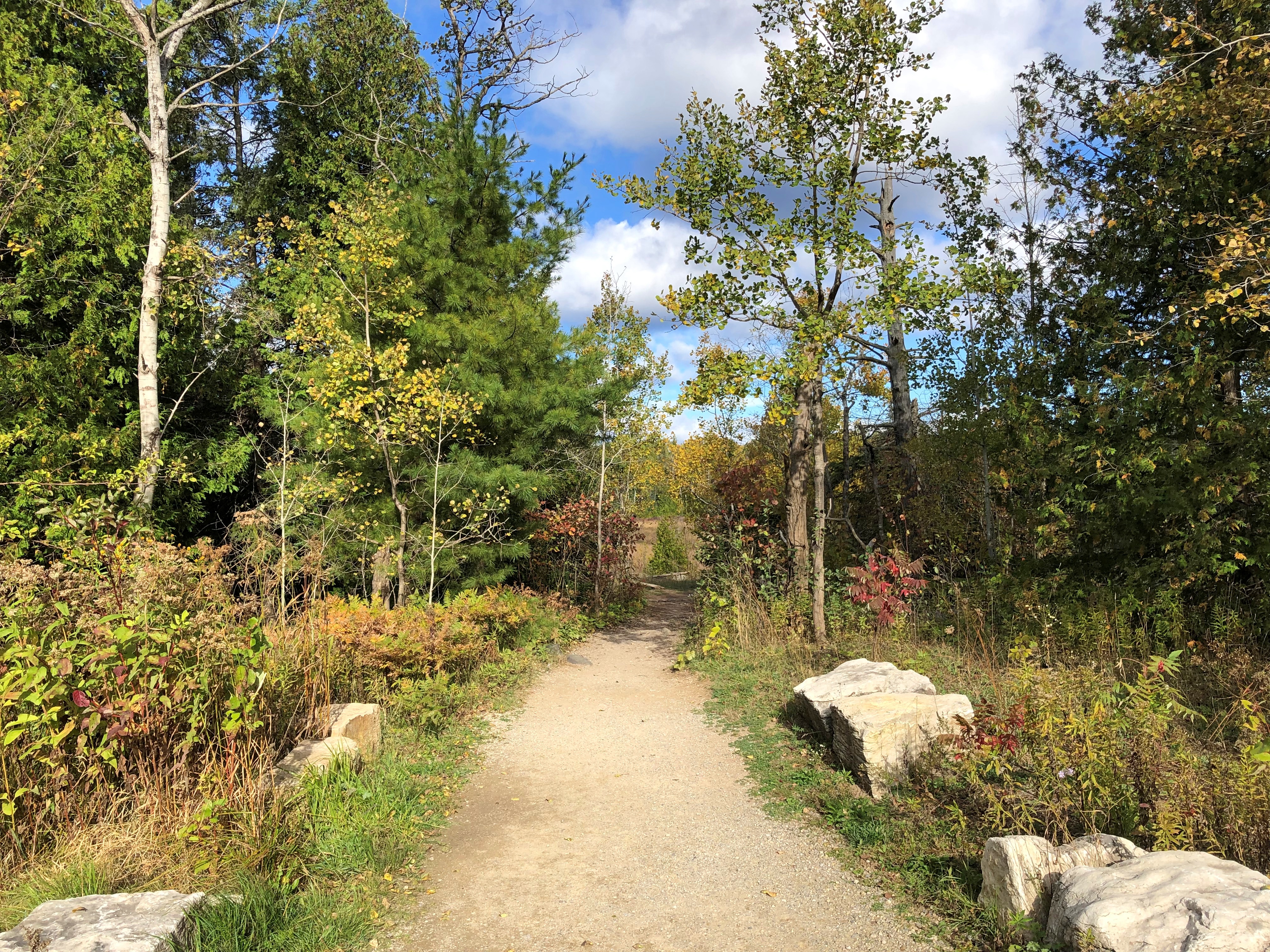

Soon you come to the rocky shores of the bay. This place has some centuries (millennia?) to go before it’s a sandy beach. For our part, we’d never seen Georgian Bay before. But for a low place in the Niagara Escarpment, it could have been an entire other great lake, so large is it — 5,800 square miles, or only somewhat smaller than Lake Ontario.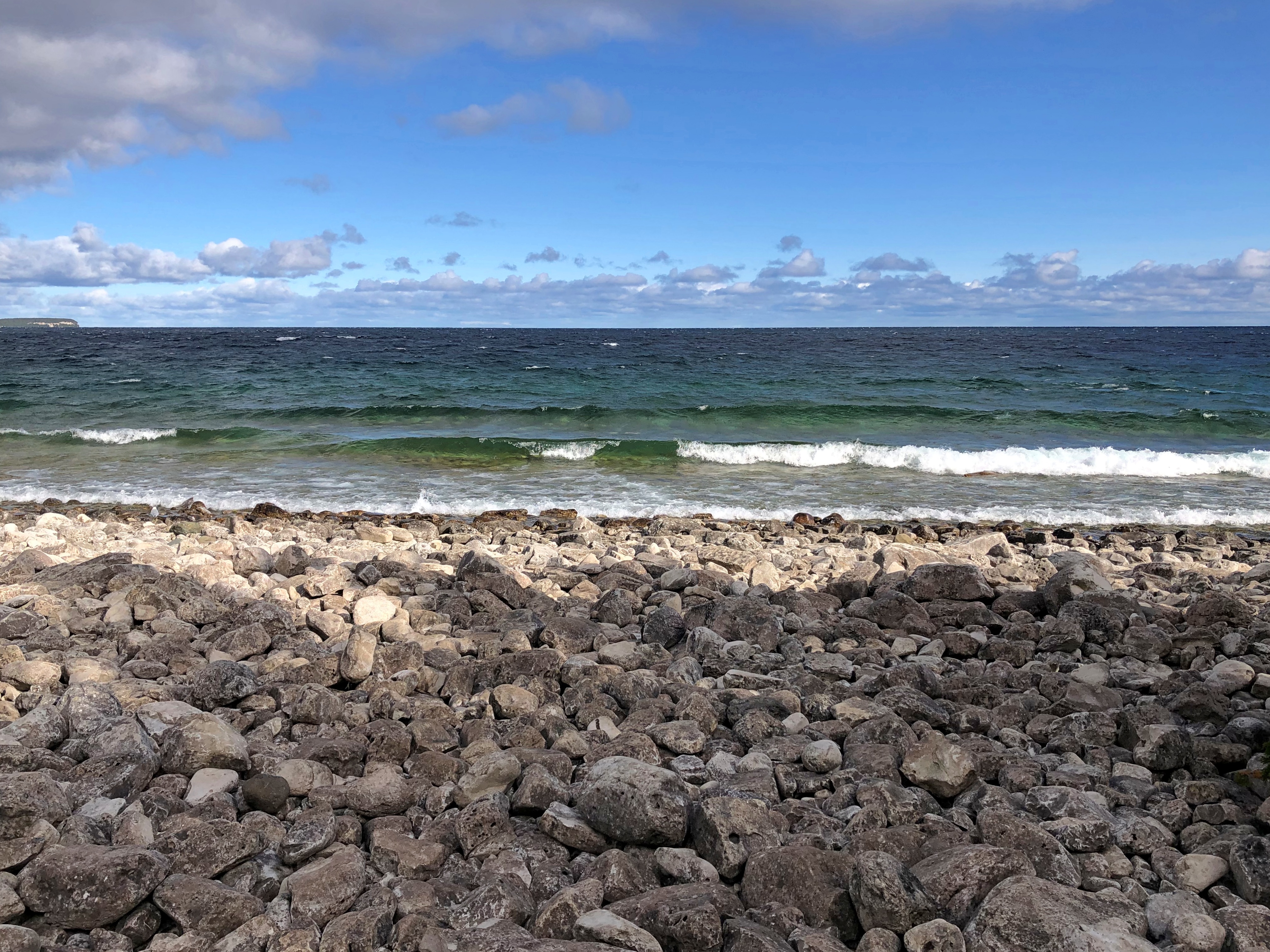

More rocks than you can shake a stick at. And we had our sticks – poles, anyway – and good thing, because the trail crossed the lakeside rock field. It took a little while to eye the course of the trail across the rocks.
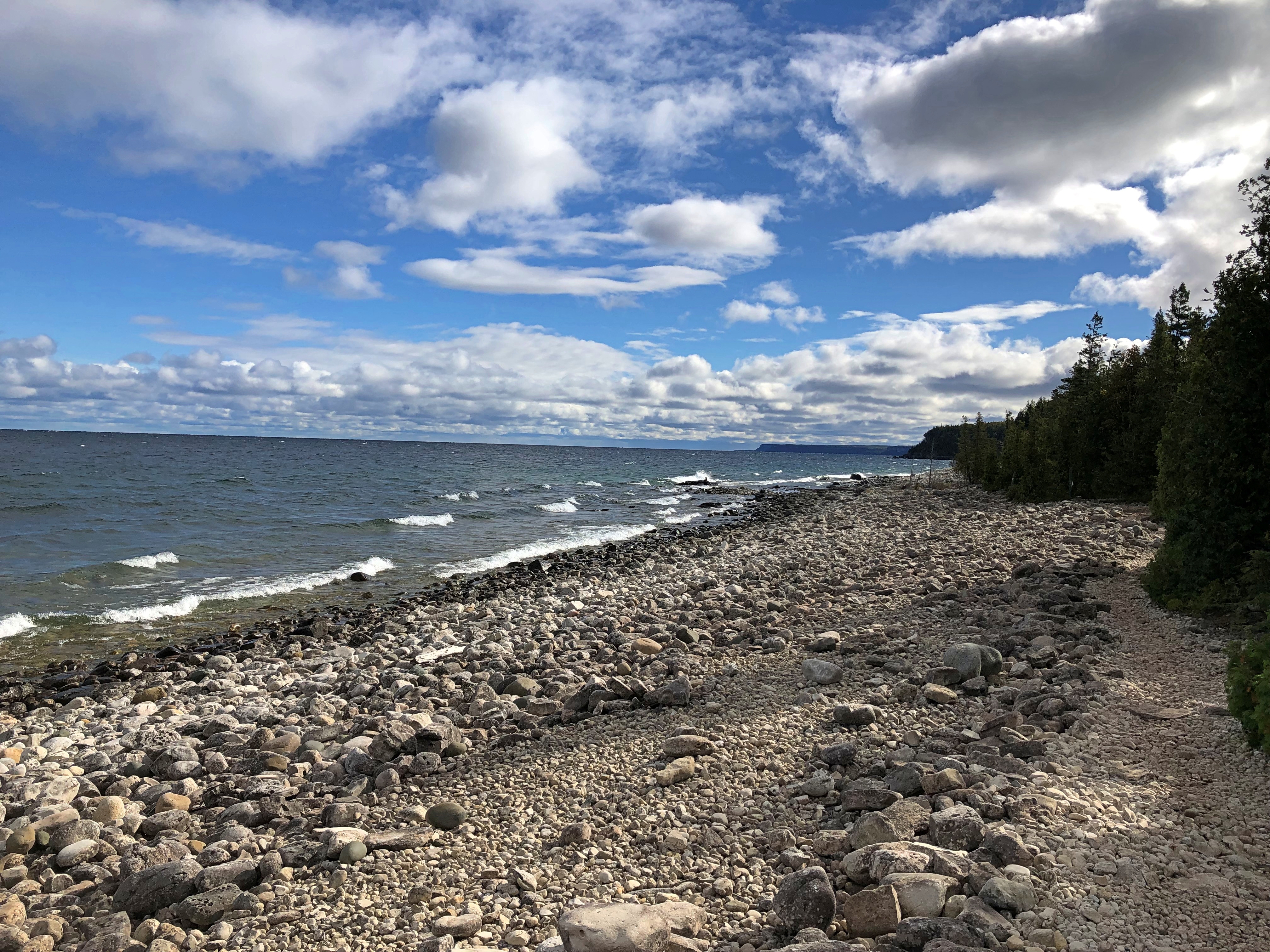
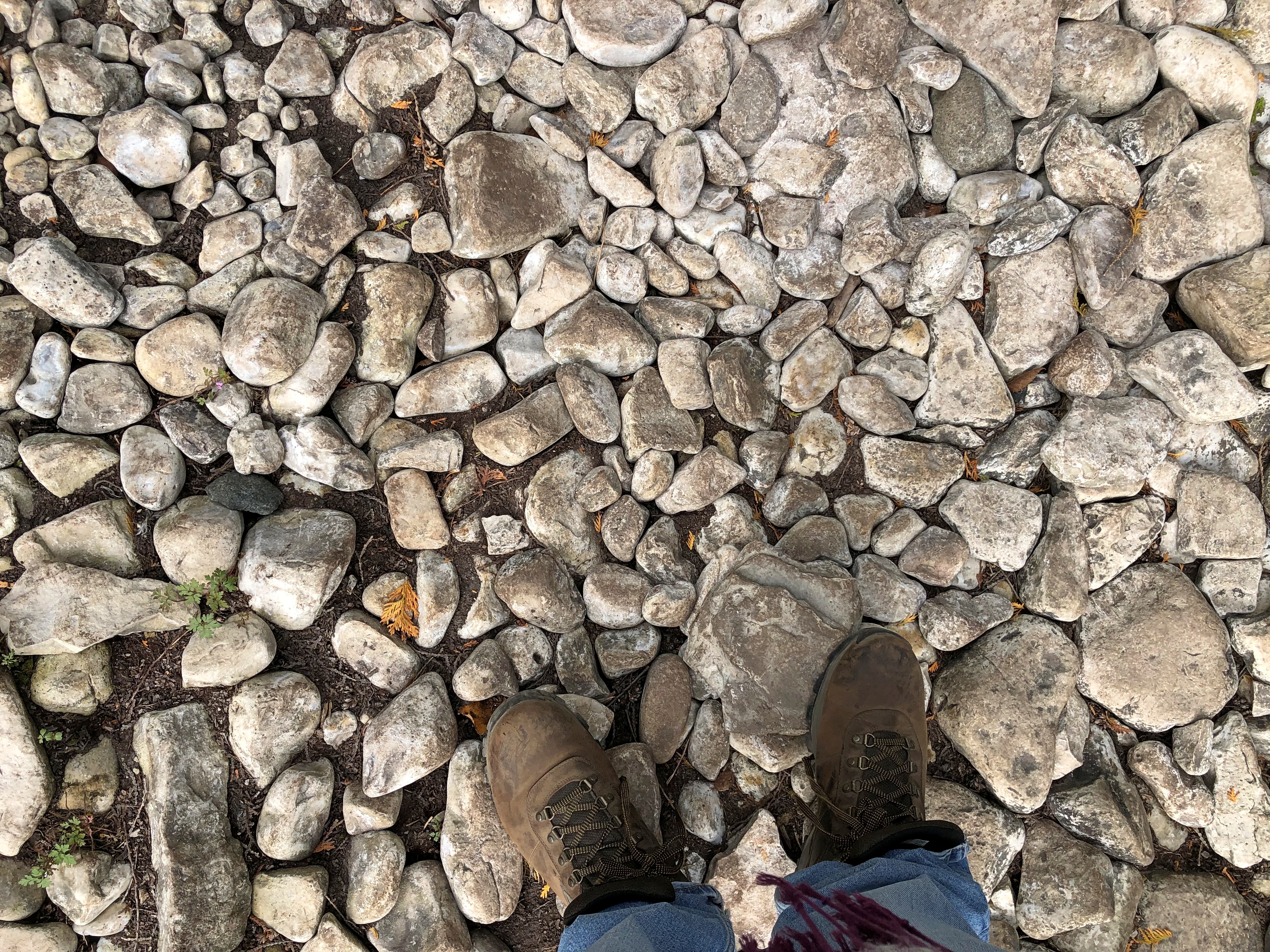
I’m not suggesting it was a technically difficult hike. Tricky is more like it, and at my partly advanced age, slow going. But after a few minutes you get the knack for it, or at least enough to position your steps to avoid a tumble.
The trail eventually led back into the woods, which was just as slow.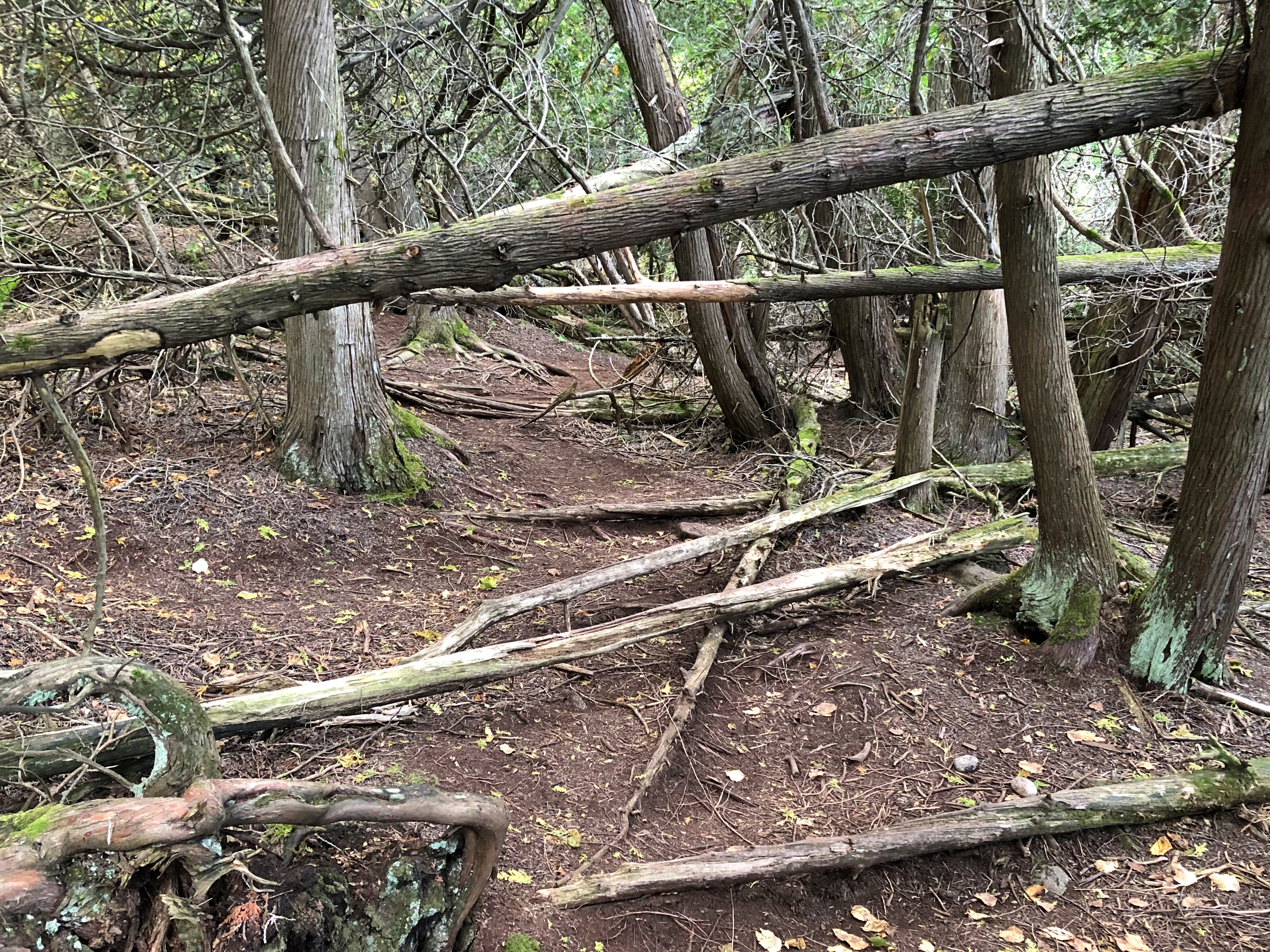
But worth it, as the trail soon to us back to the wind-swept coast.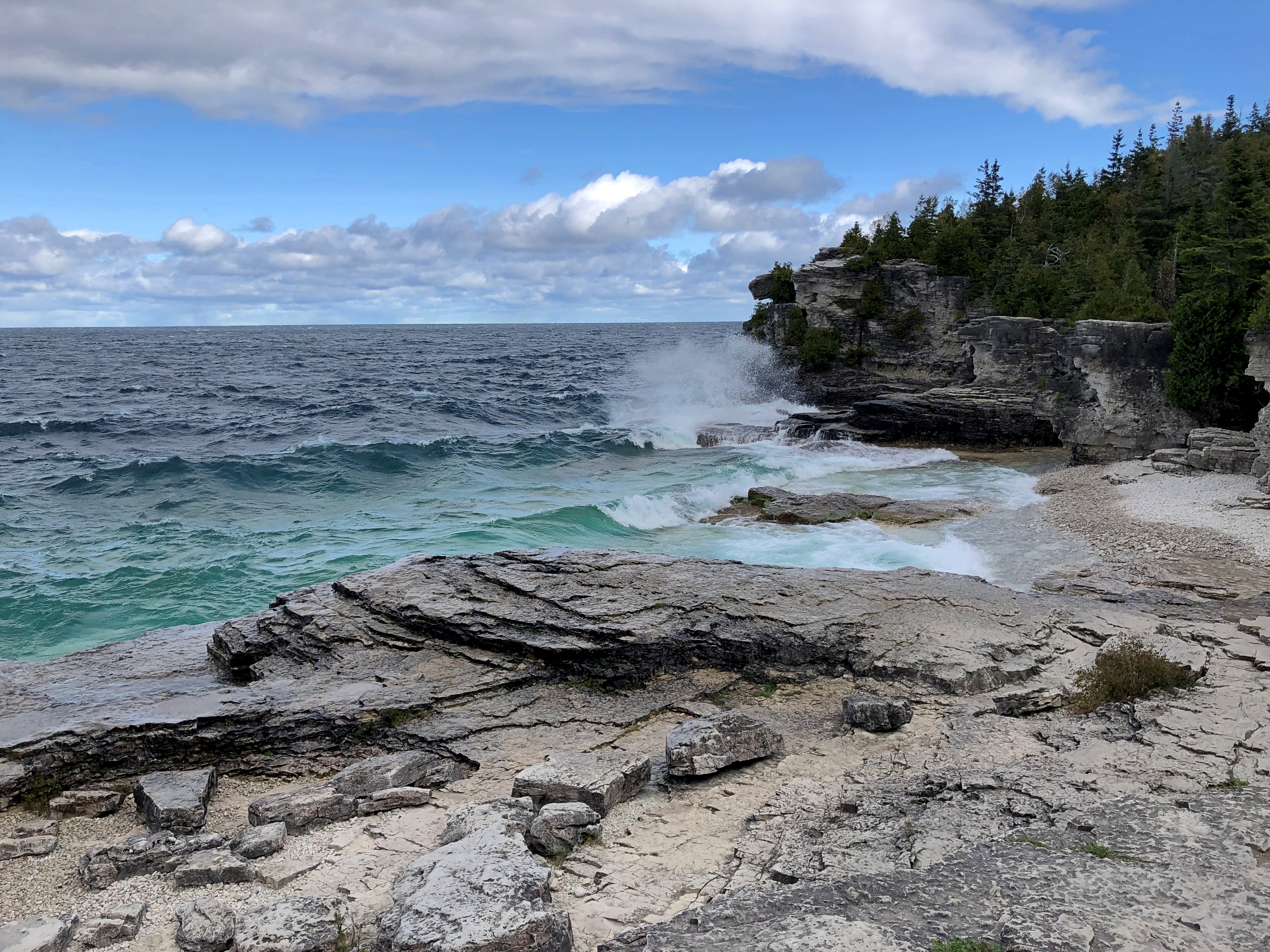
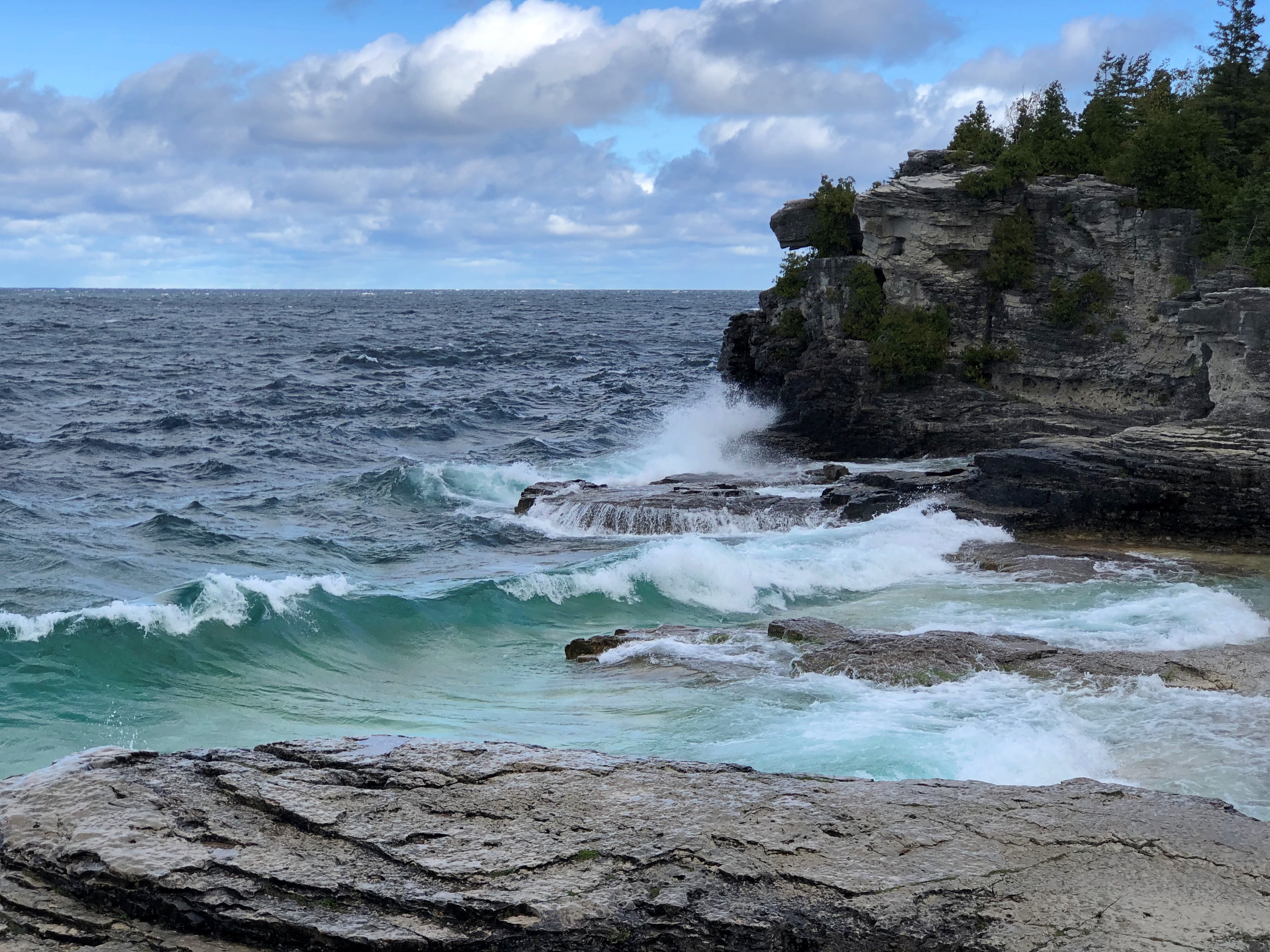
Winds would have made a bad day on a boat. On the shore, it was a fortuitous ingredient of a good day.

